As small of a country as Portugal is, there’s a lot to see and do. One week was the perfect amount of time to see Porto and the smaller towns in the north. Here is your guide to northern Portugal.
Porto: Top Tourist Attractions
Porto is the second largest city in Portugal after Lisbon. It’s located in the Douro Valley, known as the area that produces port wine. I stayed in the neighborhood of Trindade, which is walking distance to Porto’s most popular attractions. I’ll talk more about them below.
São Bento Train Station and Porto Cathedral
Probably the most well-known tourist attraction is São Bento Train Station. It’s a working station, but people stop in just to see the elaborate tile artwork in the lobby. Just up the street is Porto Cathedral (Sé do Porto) and its cloister. It also features Portuguese tile in addition to Baroque, Gothic, and other architectural styles. You can get a wide view of the city and Douro River from the cathedral’s square, where they used to hang criminals in the old days.
Also up the street from São Bento station, you can catch the city bus and multiple hop-on hop-off buses, which can be a great way to get a lay of the land.


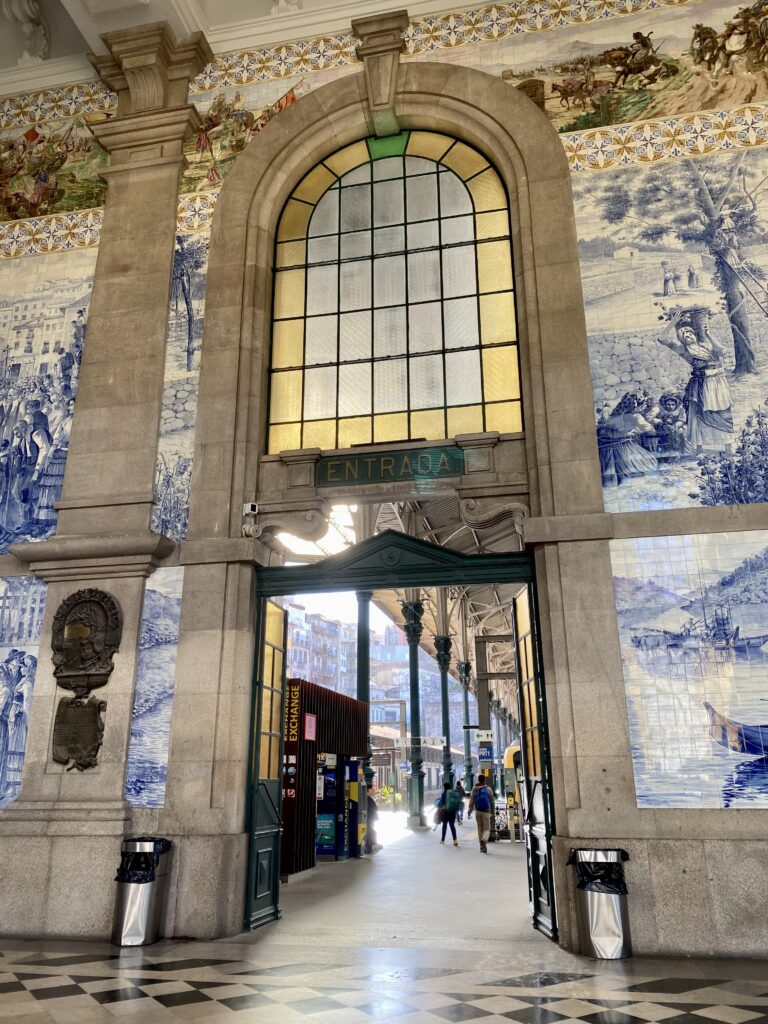
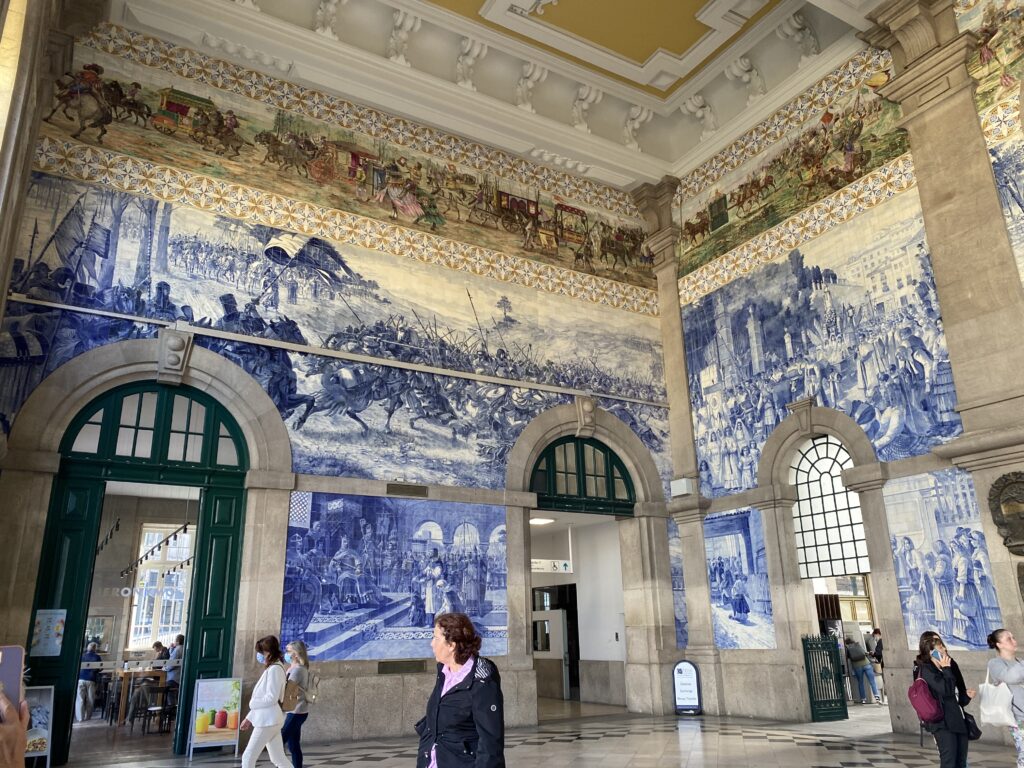

Livraria Lello
Whether you’re a Harry Potter fan or not, a visit to Livraria Lello is a must. This bookstore was made popular as J.K. Rowling’s source of inspiration for Hogwarts. You can see why when you look at the curved crimson staircase and bridge and art nouveau style.
The only downside is that it’s extremely difficult to get a photo without a bunch of other people in the shot. If you’re set on the perfect photo, you’ll have to be very patient. Ticketed entry goes by group so there’s no possibility of getting there before the crowd. Still, it’s worth a visit and basic entry tickets are only 5 euros.
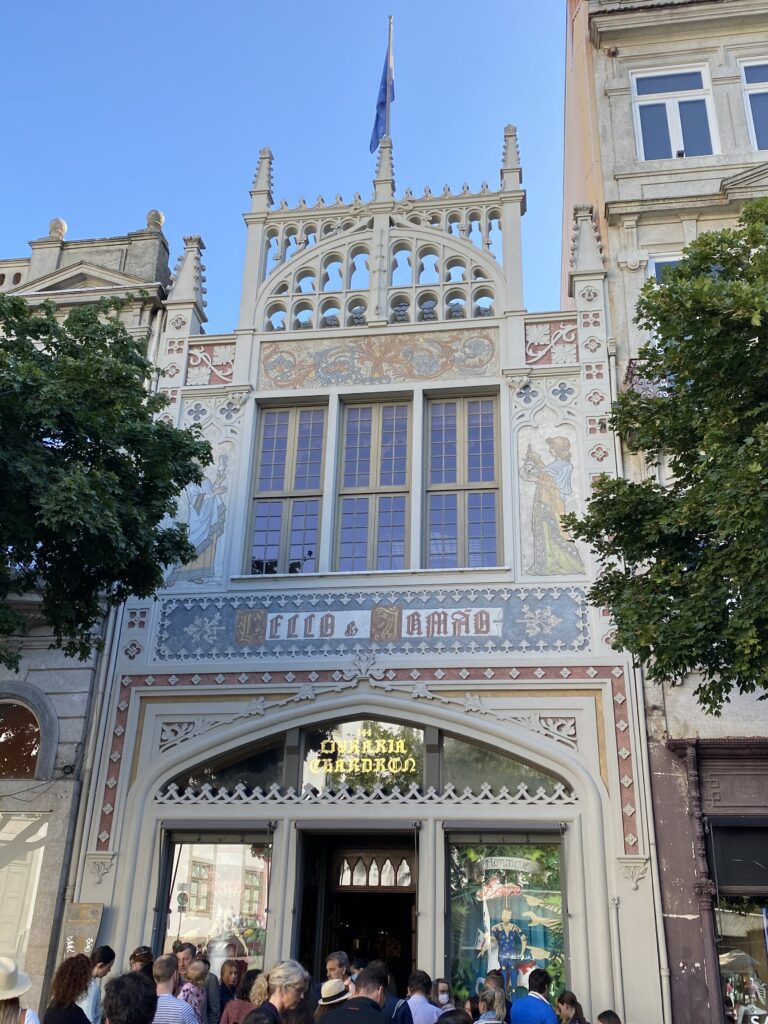
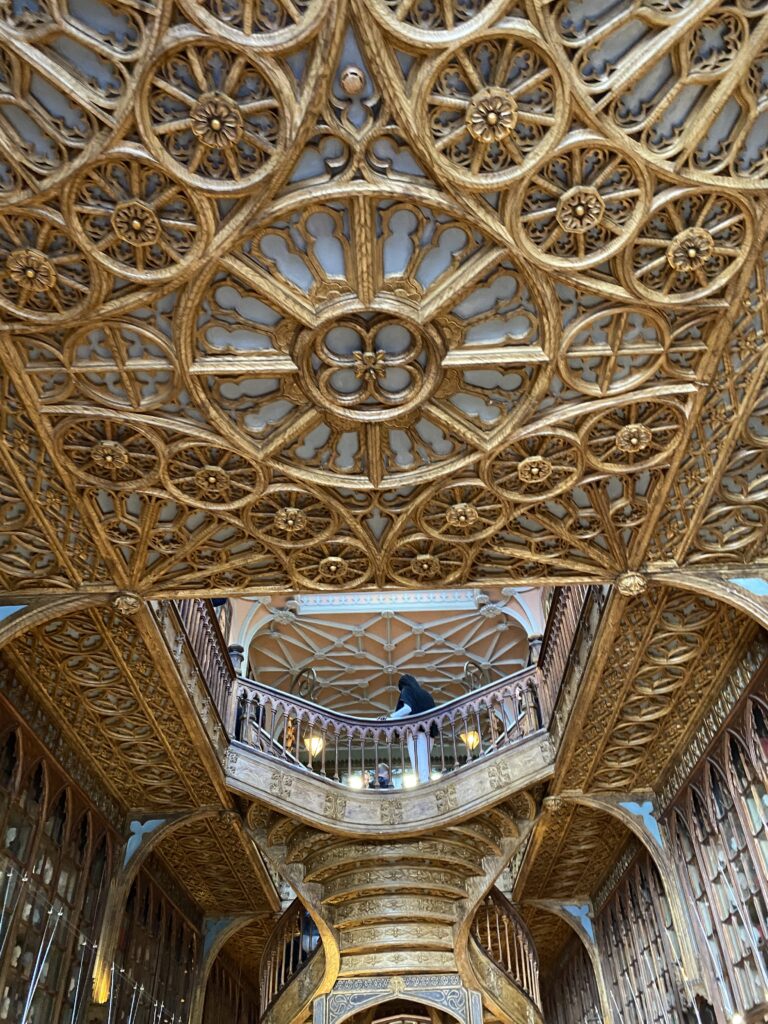
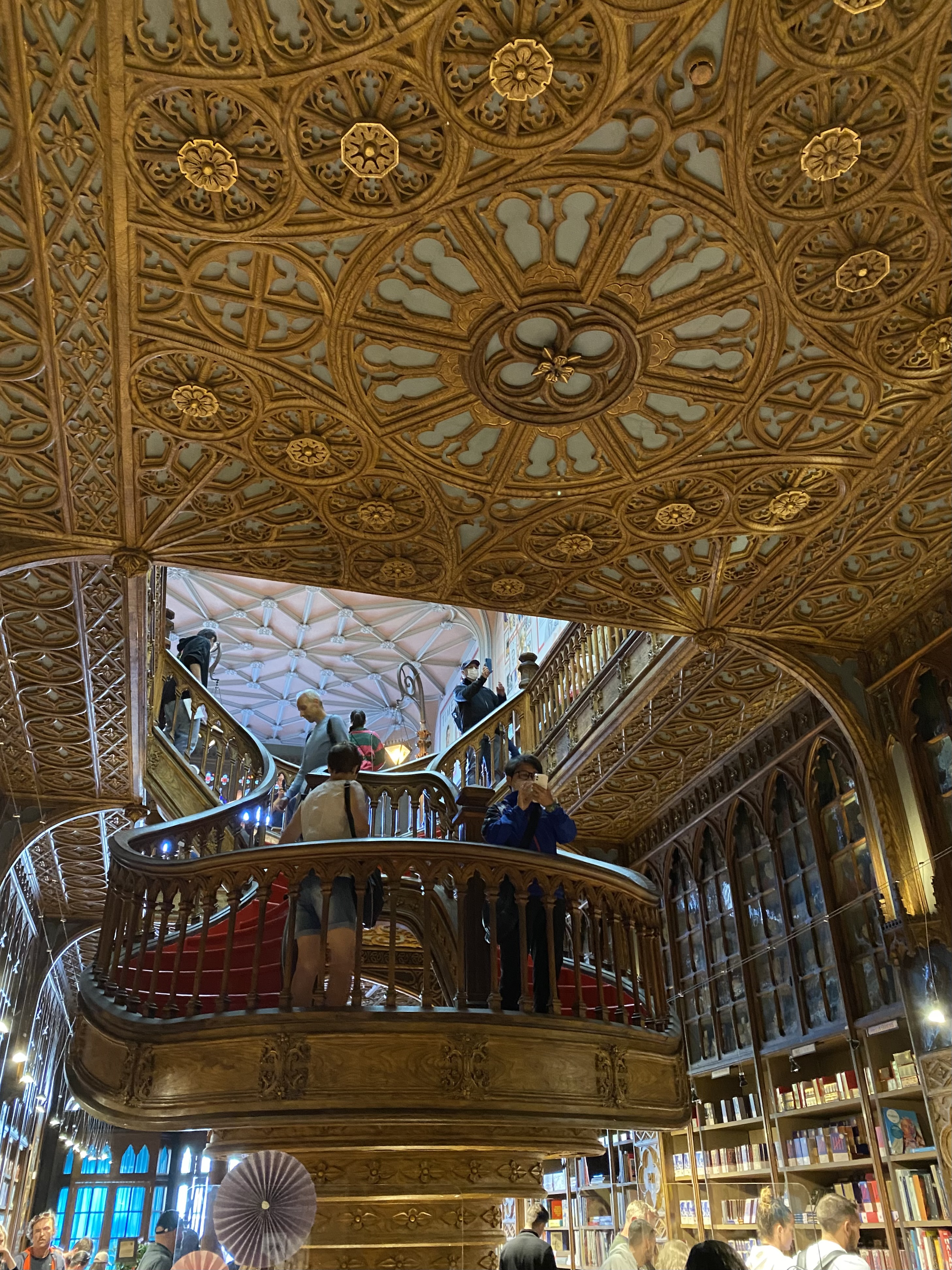
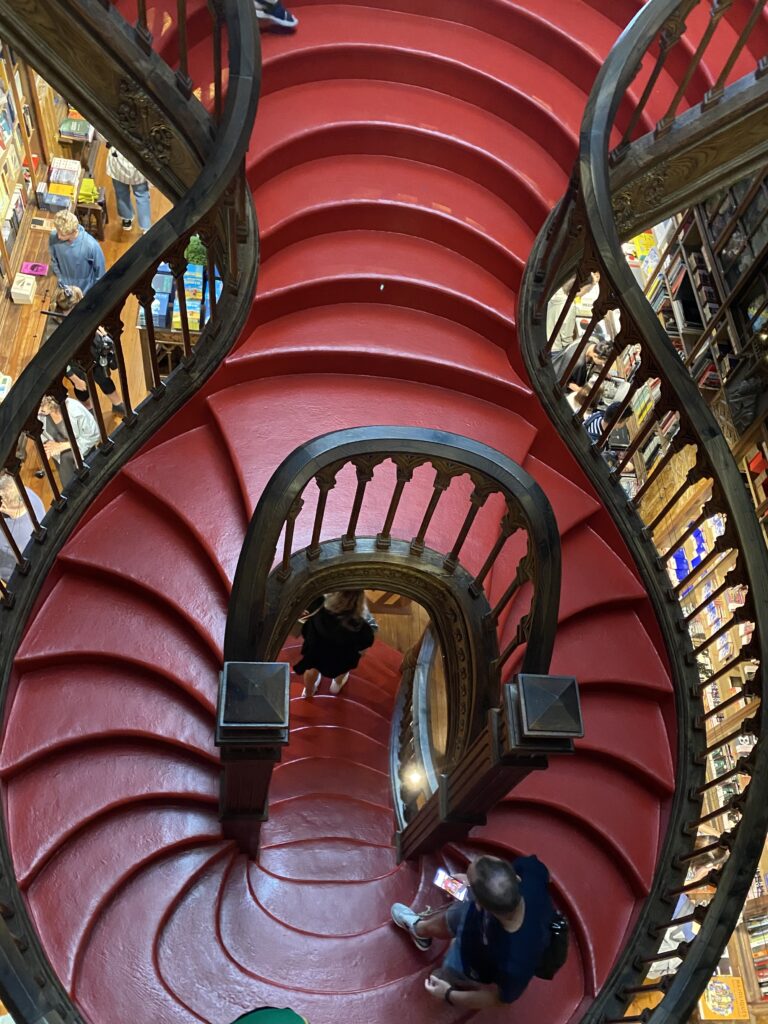
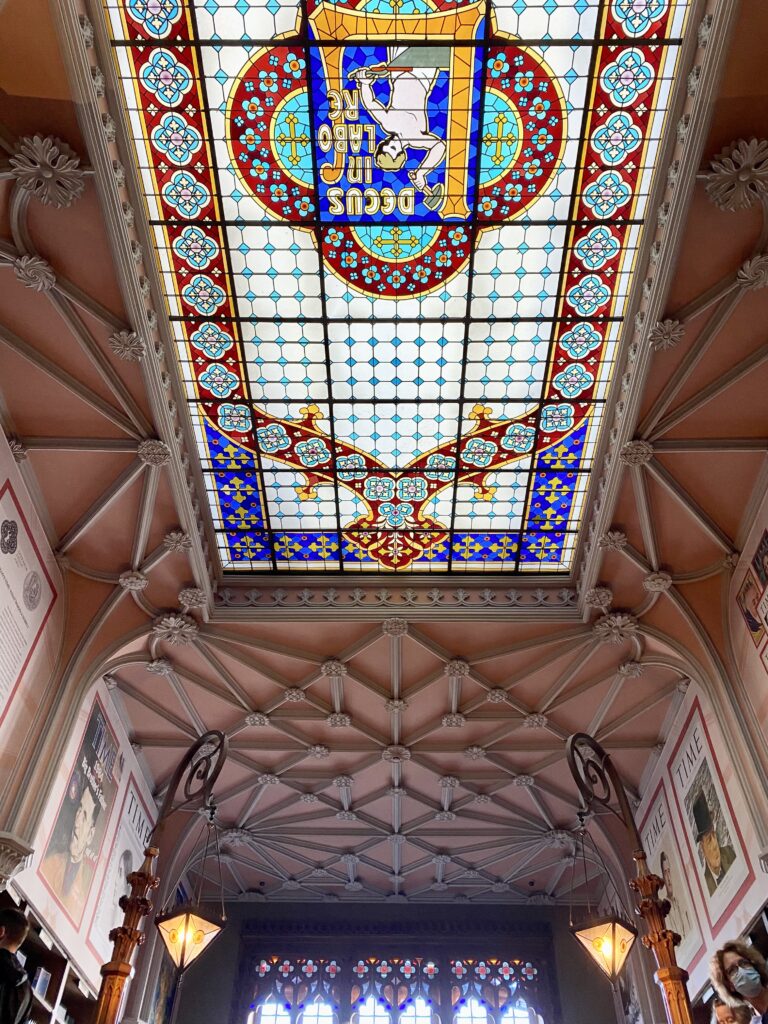
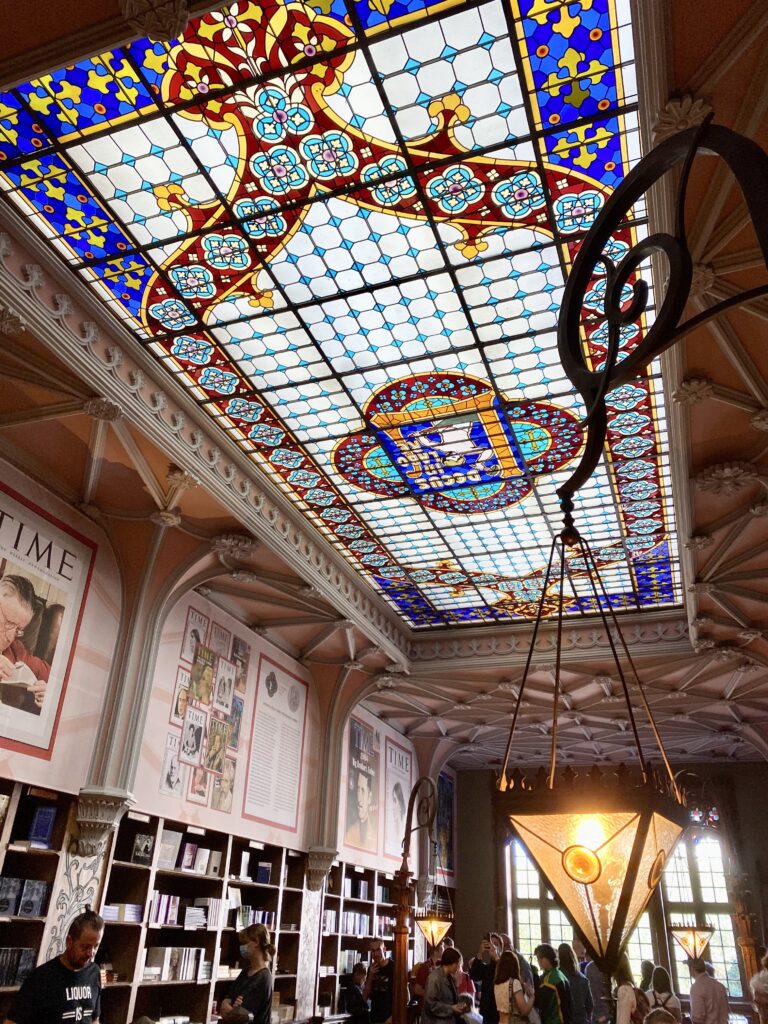
Unique Cafes and Streets
Porto has a few streets and plazas popular for shopping, cafes, or unique architecture. Avenida dos Aliados connects the old and modern parts of town. Its center is a promenade lined by monuments, ornate buildings, and the town hall featuring a tall clock tower. On this street is the Imperial McDonald’s, which used to be Cafe Imperial. It’s probably the nicest McDonald’s you’ll ever see. Built in the 1930’s, restored, and reopened as a McDonald’s in 1995, the interior has beautiful ceilings with chandeliers and an art deco stained glass mural.
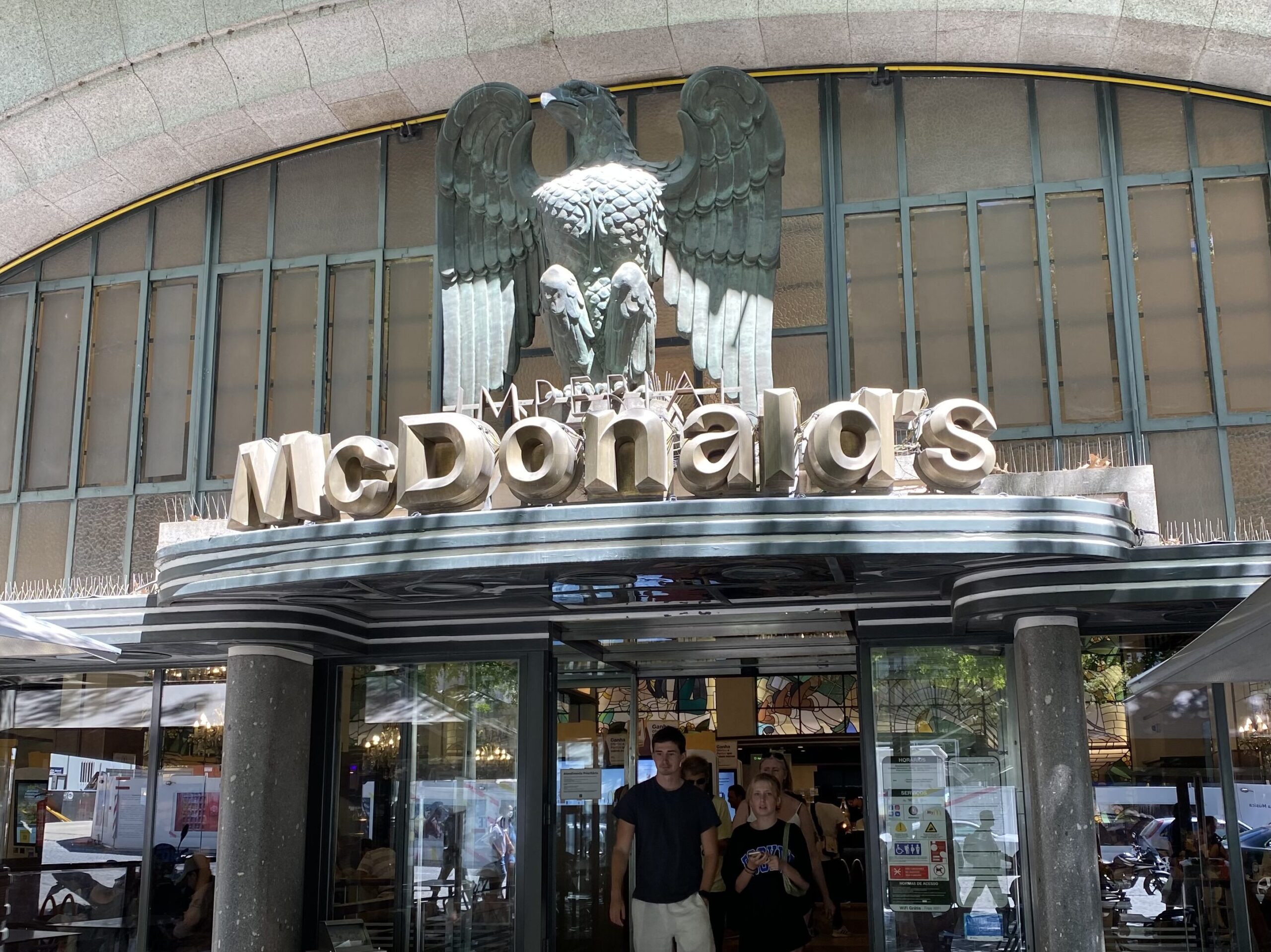
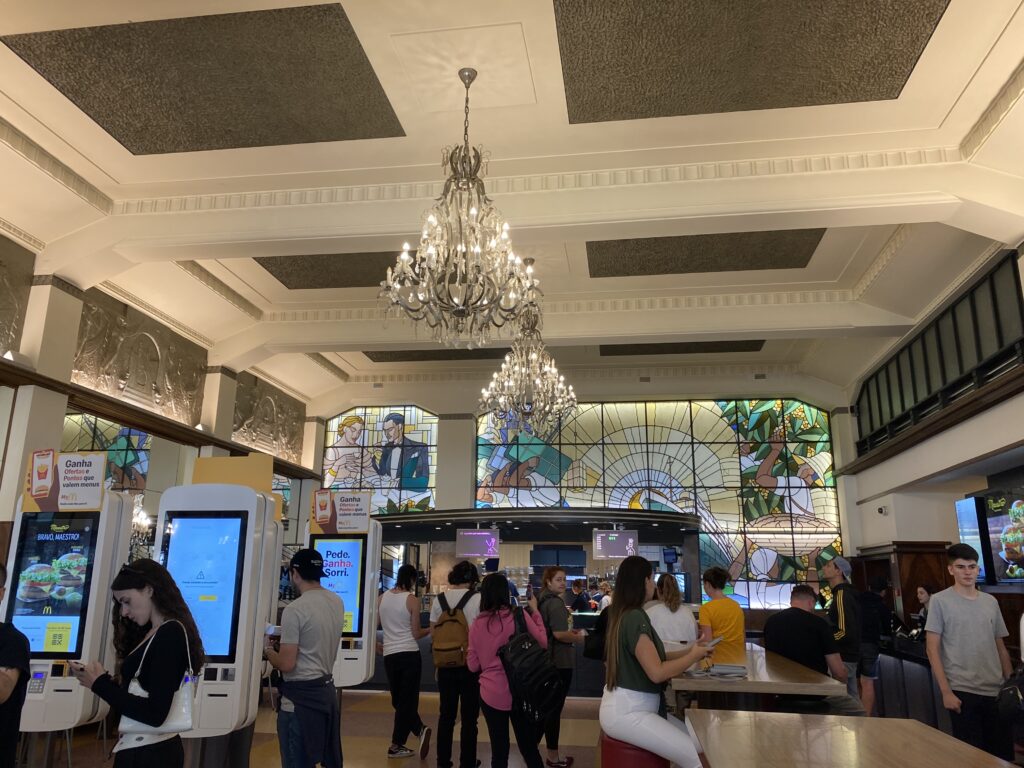

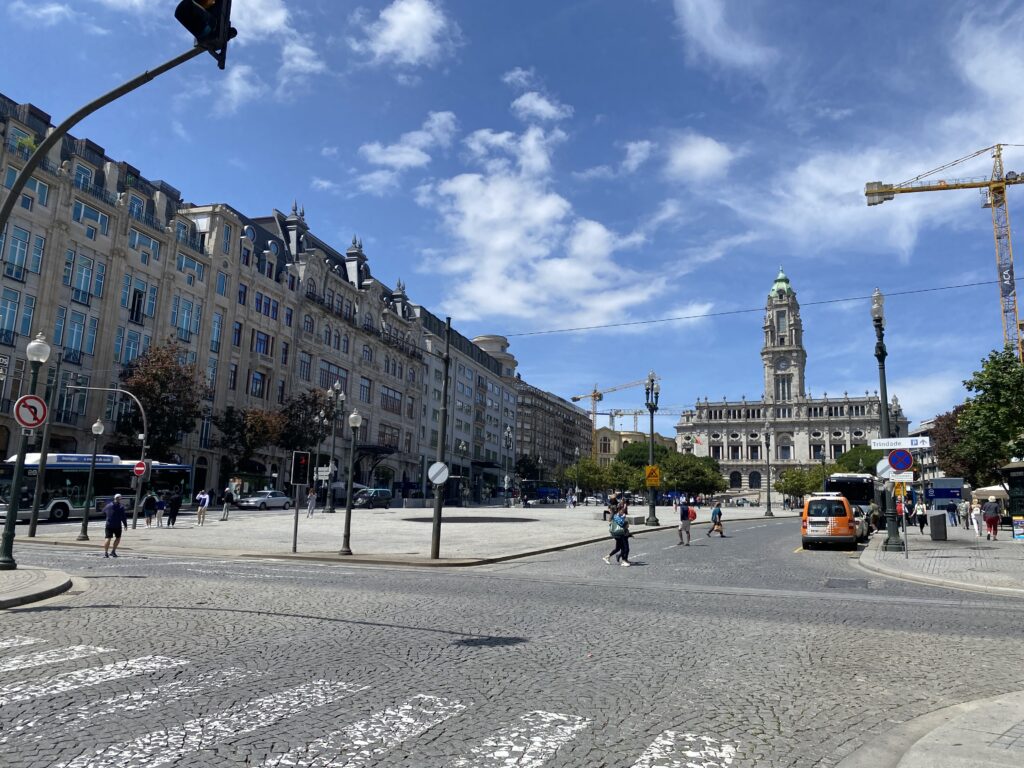
Another gorgeous art deco-style cafe is Cafe Majestic, located on the popular shopping street of Rua de Santa Catarina. Cafe Majestic is an upscale option, but if you’re on a budget just stop in for a coffee and dessert.
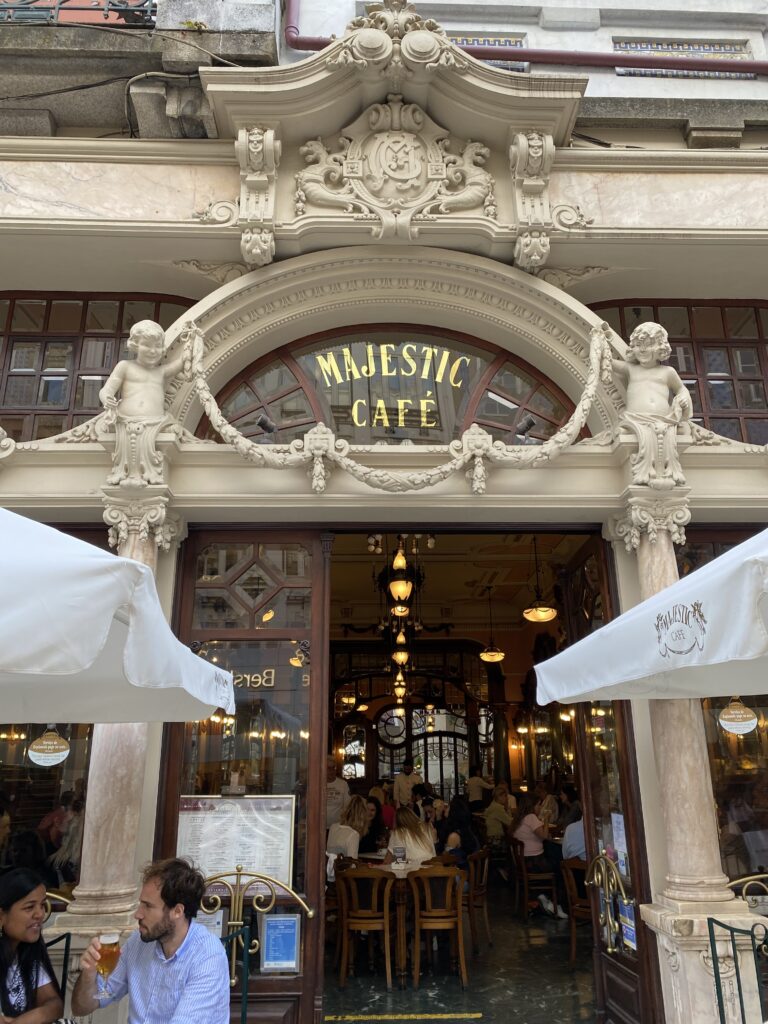
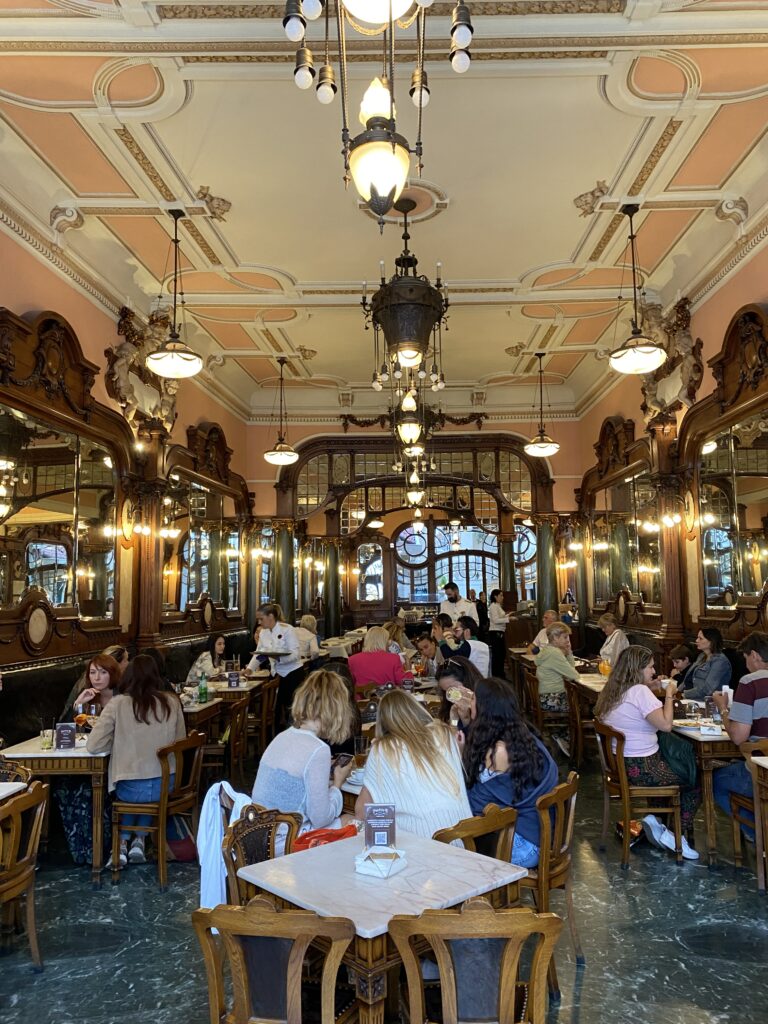
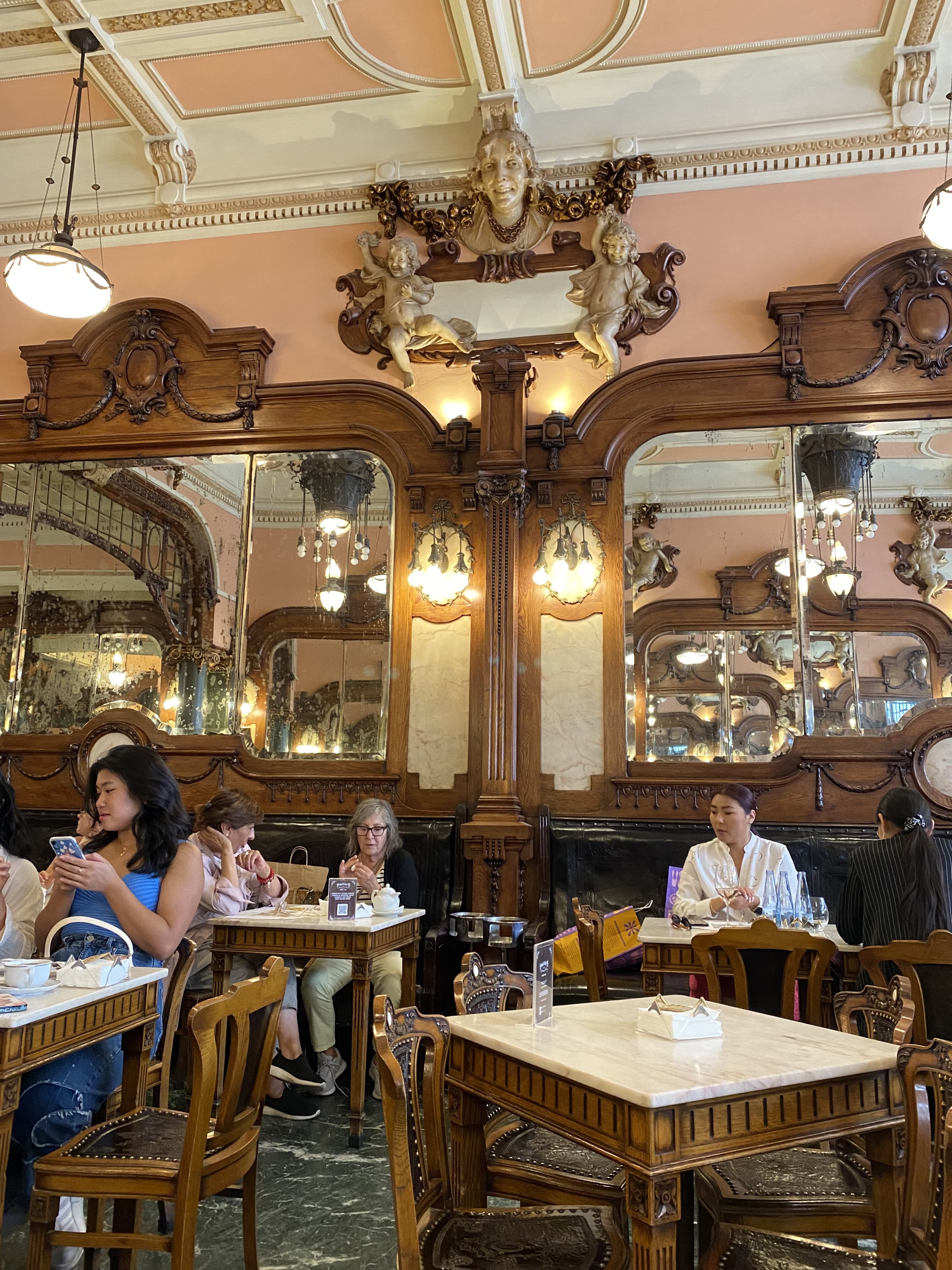

Rua das Flores, or Flowers Street, is a charming 16th-century street that gets its name from the many gardens that used to surround it. It was home to aristocrats in the 17th-19th centuries and you can still see historic details on the buildings. It’s now decorated with flowers on the buildings and features cafes, restaurants, and small shops. I walked along this street a couple of times and had brunch at Mercador Cafe.

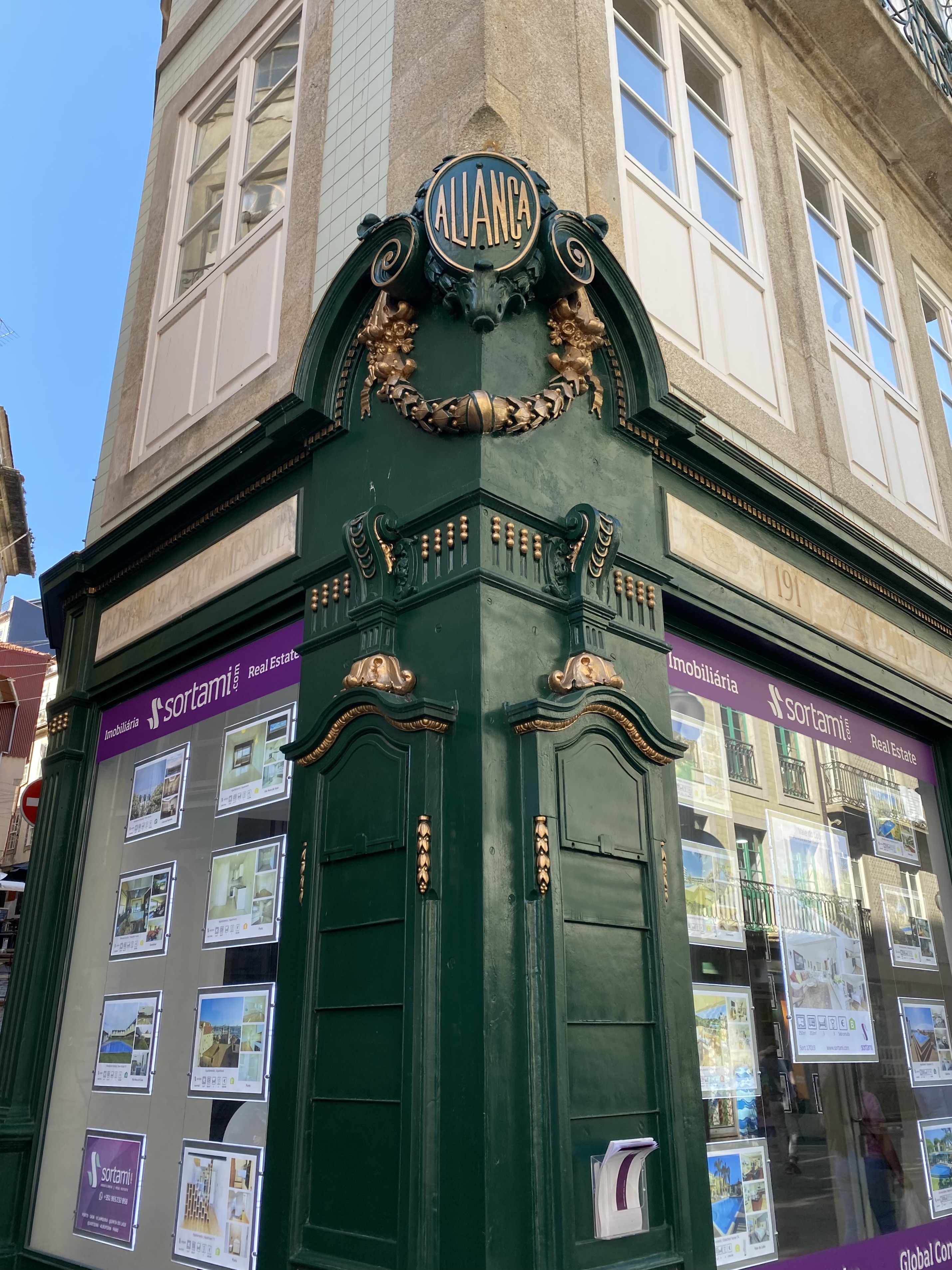
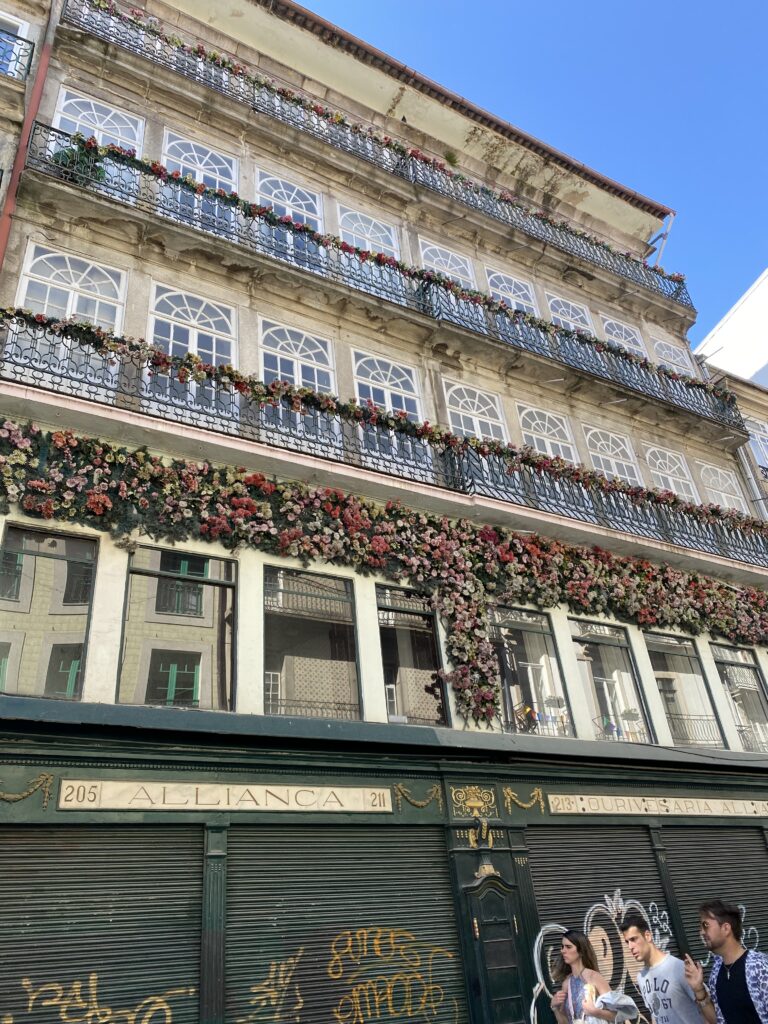
Gaia and Port Wine Tasting
Across the Douro River is the municipality of Vila Nova de Gaia. This is where you’ll want to go for your port wine tastings as there are multiple cellars. I visited Quinta da Boeira and tasted two wines, one tawny aged 7 years and one white aged 10 years. That was plenty since I’m not a fan of sweet wines, but I had to taste port while in Porto. The cellar also has a nice garden in the back.
Gaia offers a great view of the Douro River and Porto. If you take the short walk up to the former Monastery of Serra do Pilar you can see everything. The Jardim do Morro, a park right across the street, is also a great viewpoint and a nice place to relax outside.
If it’s warm enough, you can visit some Gaia beaches, as well. The municipality has the highest number of Blue Flag beaches in the country. Even if you don’t end up swimming, they offer a nice backdrop for a stroll.
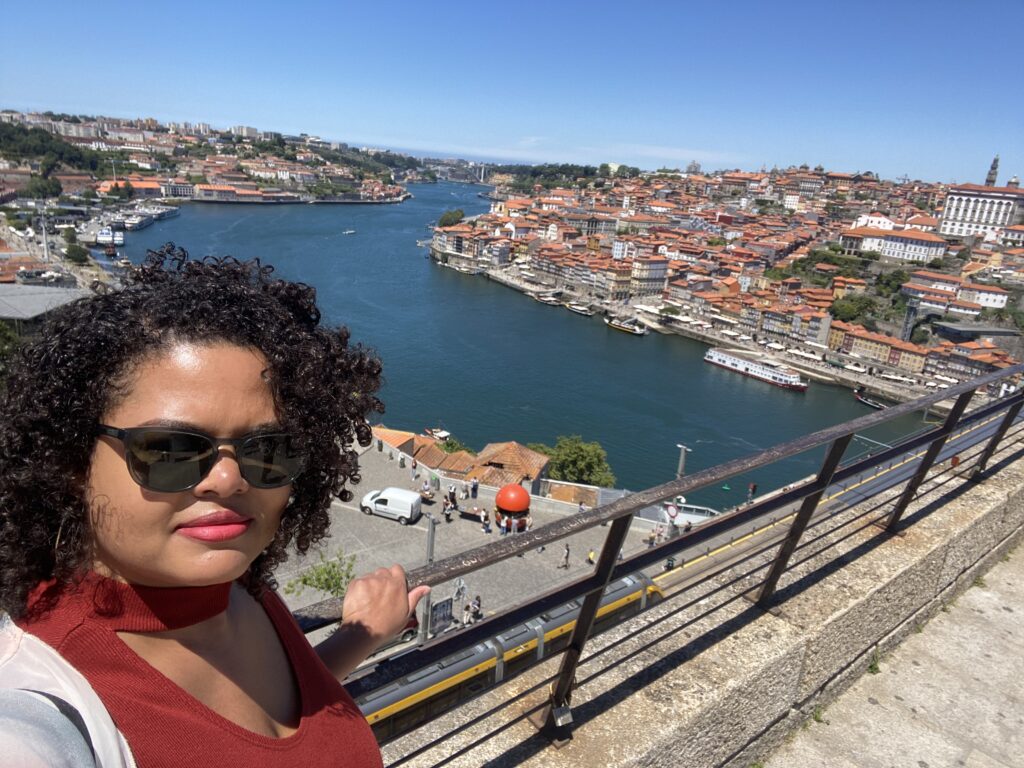
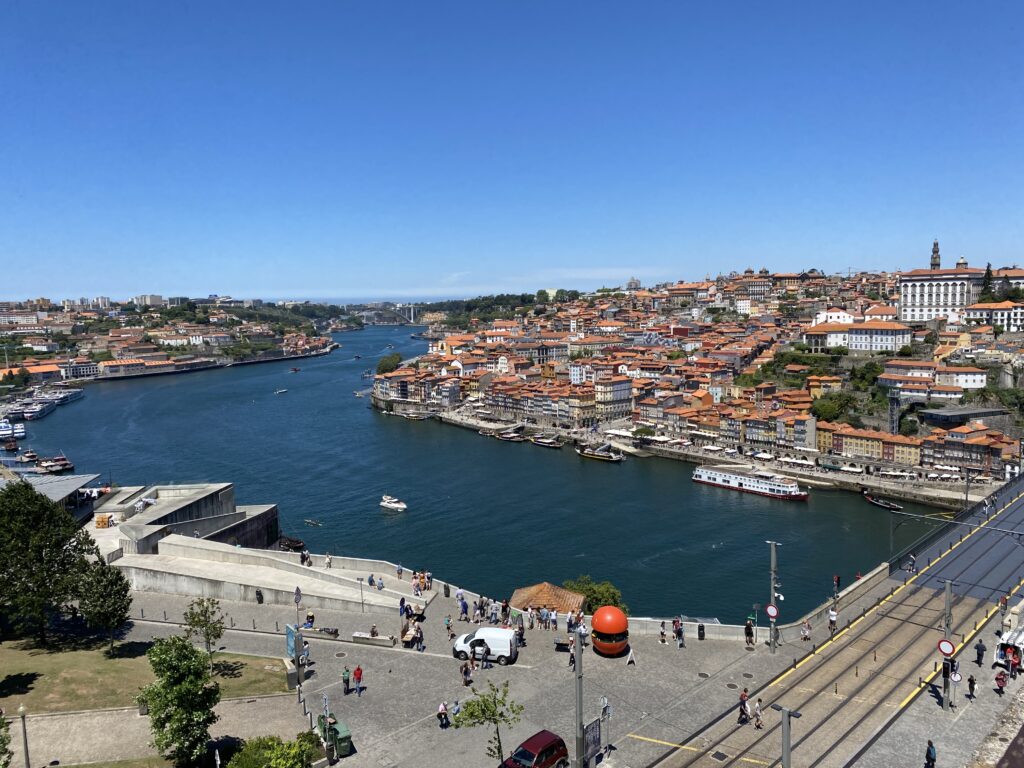

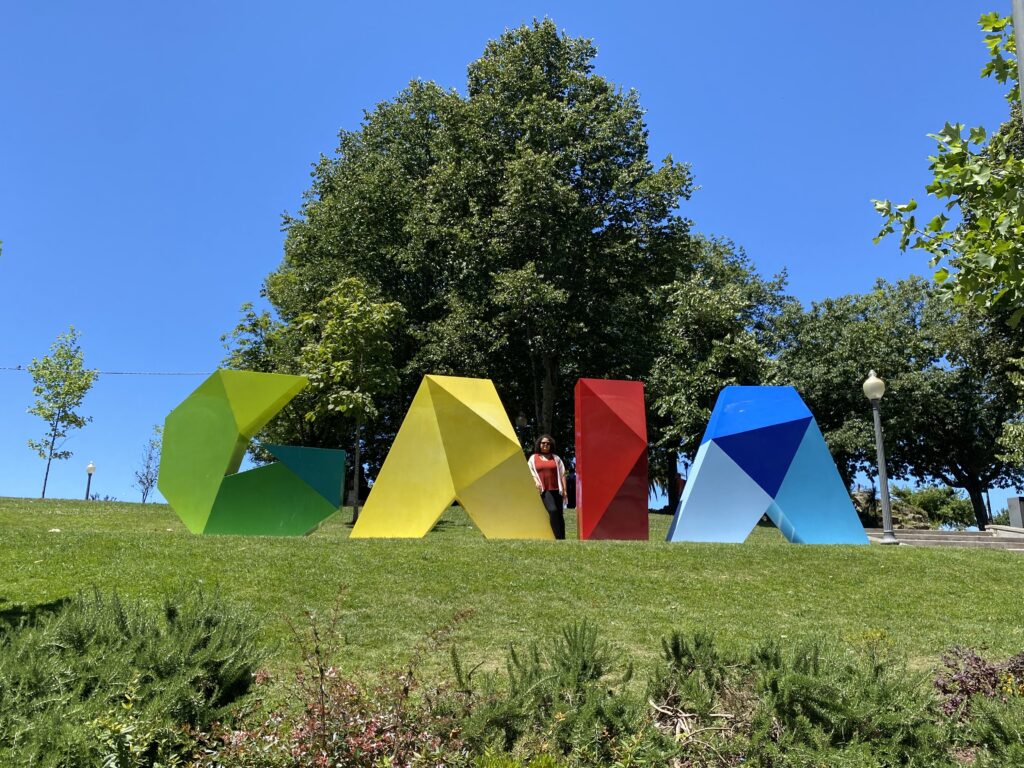
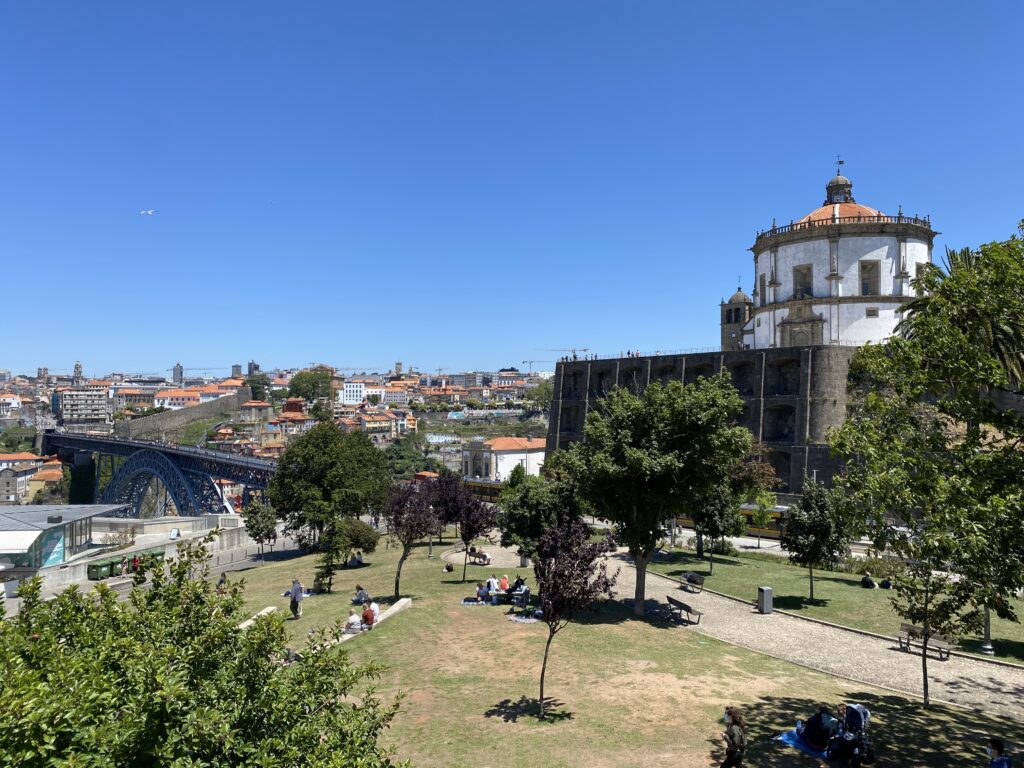

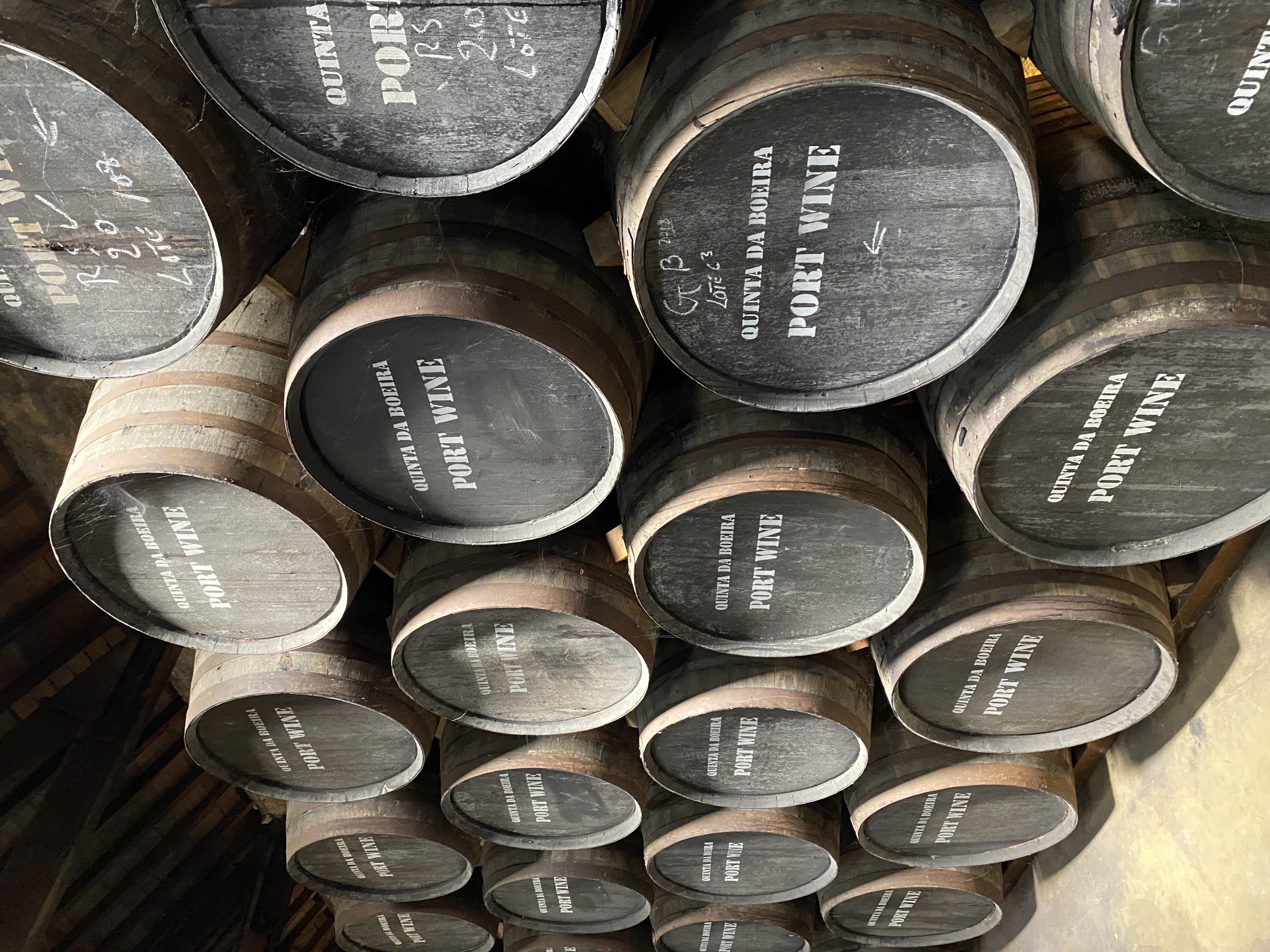
Ribeira
The neighborhood of Ribeira is located in the old town on the Douro River waterfront. It’s one of the most popular areas in Porto. You’ll want to walk the streets to see the architecture, but also make a stop for lunch or dinner.
River cruises leave from the Ribeira waterfront and I’d recommend taking one. It gives you a whole new vantage point and allows you to see the bridges (there are five of them) and learn a little about the area.
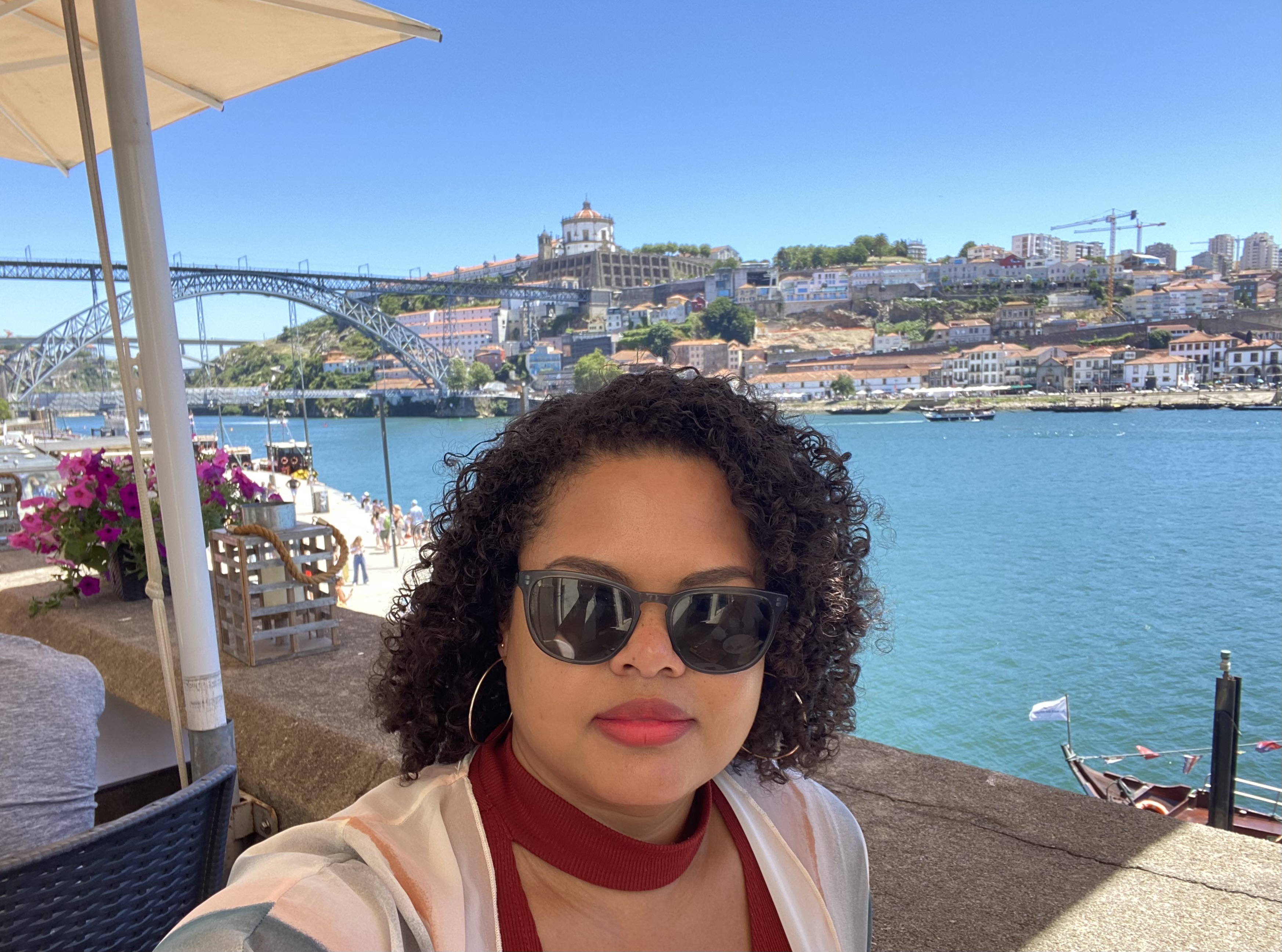
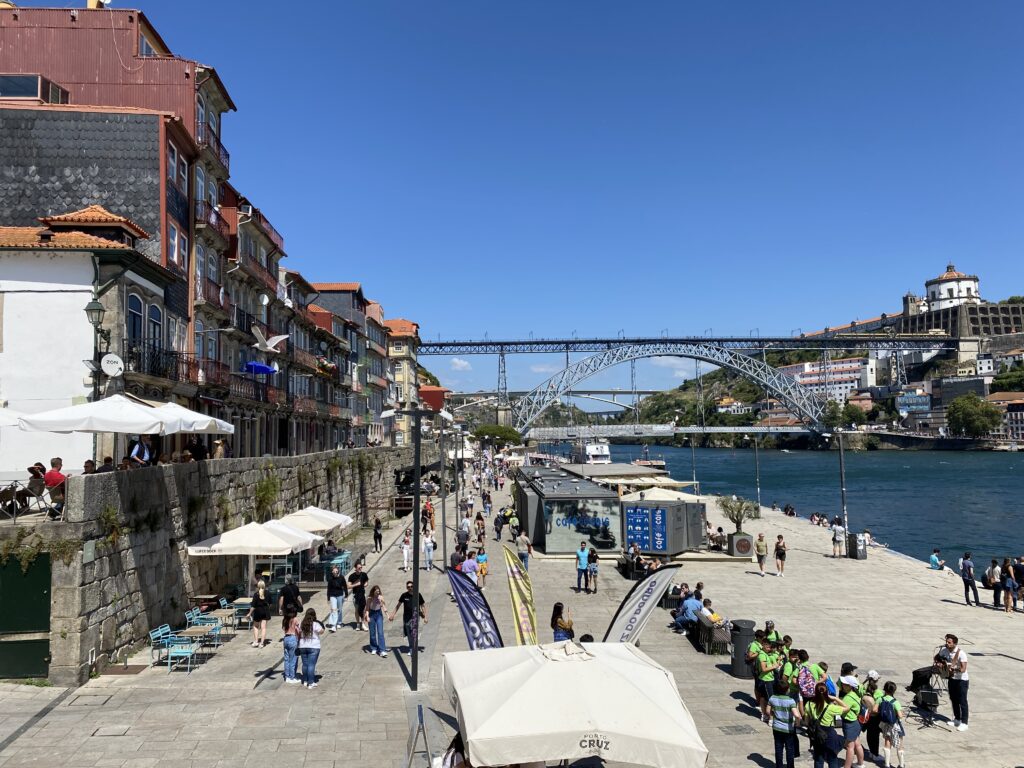

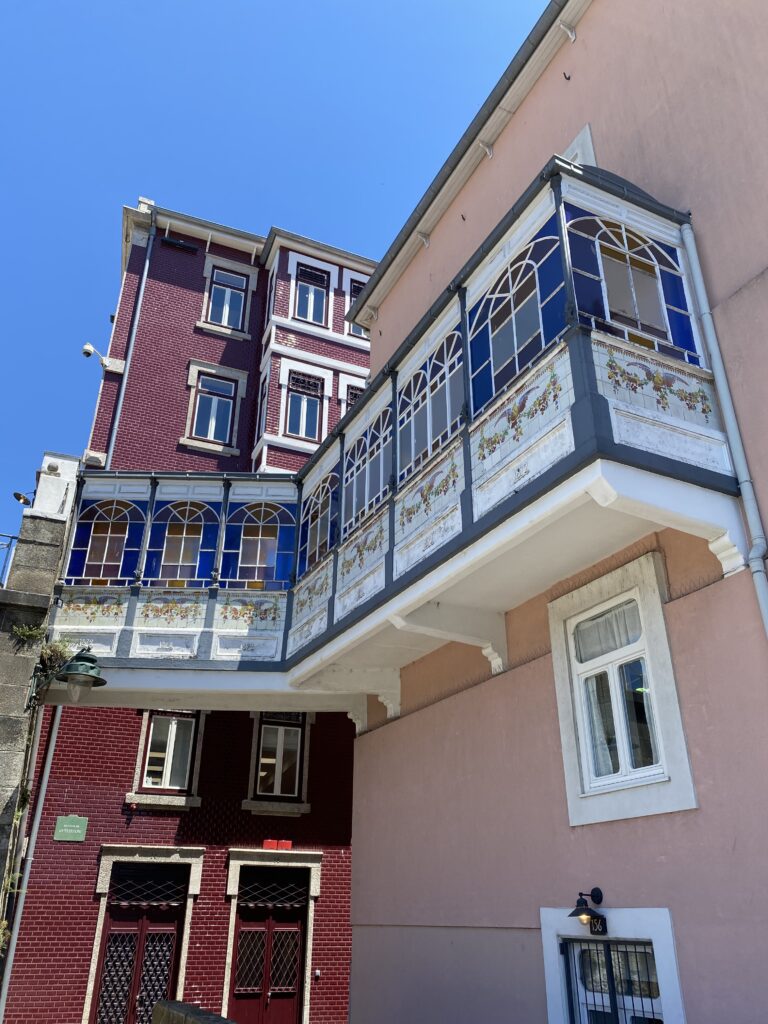
Jardins do Palácio de Cristal
The Jardins do Palácio de Cristal (Crystal Palace Gardens) is a large area of landscaped gardens designed in the 19th century. It has walking paths, fountains, perfect views of the Douro River, and lots of peacocks! It’s directly in the city, but feels very insulated from the noise and activity. If you need some relaxation time, this is the perfect place to get it.





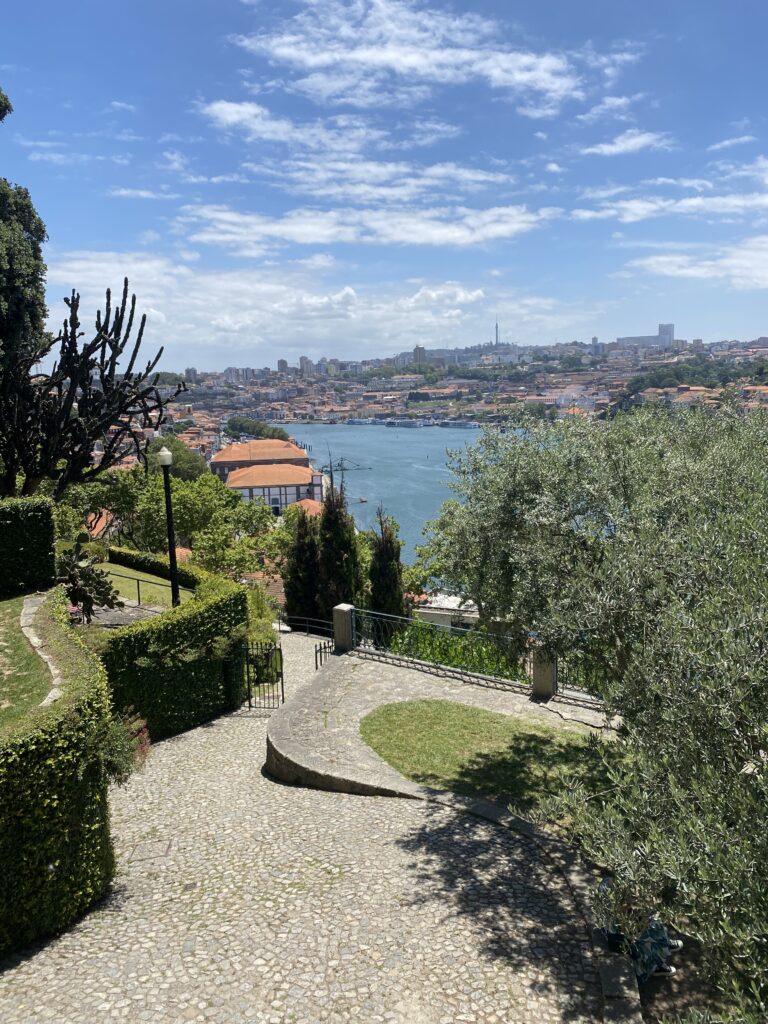
Experience a Fado Show
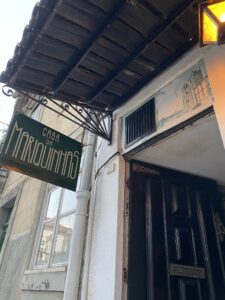
There are many options to see a fado performance in Porto. Fado is a style of Portuguese music known for its melancholic singing and guitar. It’s something you should see at least once when visiting Portugal.
Some venues serve dinner and others are only the show. I made reservations at Casa da Mariquinhas, the oldest fado house in the city right by the Porto Cathedral. The reservation comes with a prix fixe menu for 37.50 euros, with add-ons available. The menu includes an appetizer, one main dish, one bottle of wine for two people, and one dessert. It was a great deal for all the food you get plus a show.
For more fado venues, check out this comprehensive list.
Matosinhos Fishing Neighborhood and Beach
The neighborhood of Matosinhos is outside of central Porto, so it’s a bit more quiet and laid back. Right up the coast from Ribeira, it has a beach with bars and restaurants along it. It also has a fishermen’s village and it’s where you want to go for the best seafood.
If you keep walking south along the coast, you’ll pass restaurants and cafes, balconies overlooking the ocean, a 17th century fort (Castelo do Queijo), and eventually a larger fort (Fortaleza de São João da Foz). And of course, there are multiple beach areas along the way. This walk leads you right back to Ribeira, but there is also a city bus line that goes straight up and down the coast.

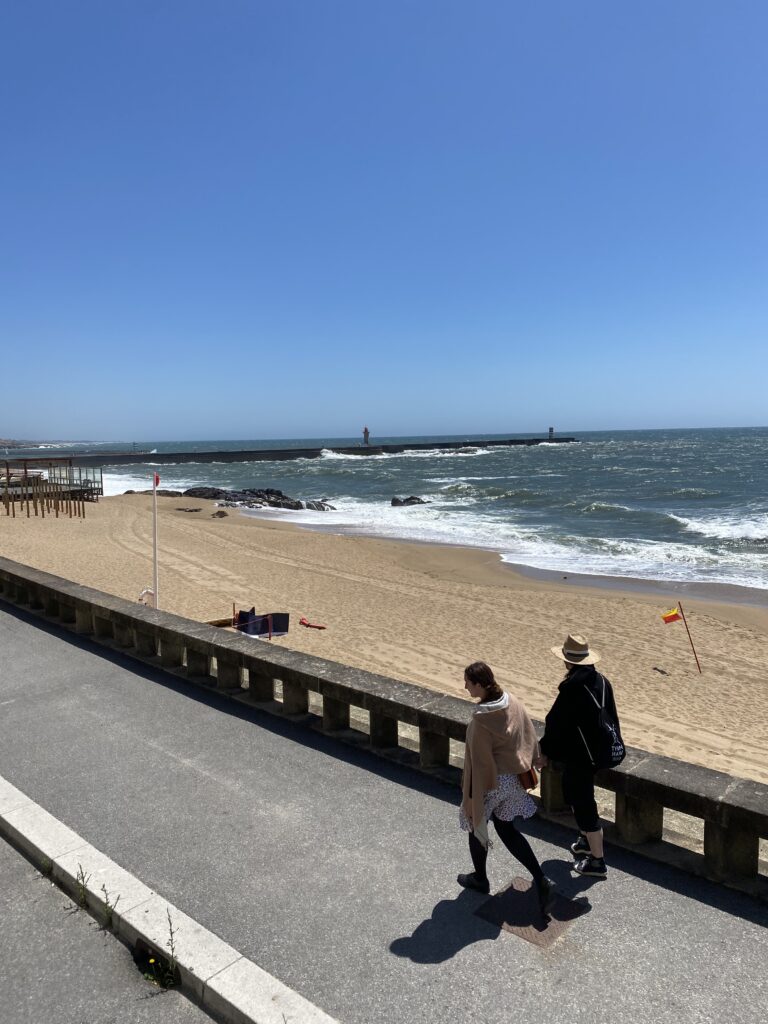


Braga, the “Rome of Portugal”
When touring northern Portugal, the city of Braga is a good next stop after Porto. It’s the oldest city in Portugal, founded by the Romans in 16 B.C. It’s also called the “Rome of Portugal” because it has over 30 churches. Braga is small, so it’s easy to see in a short time. Plus, it’s a convenient place to take longer day trips from over the course of your stay.
Here are Braga’s main highlights.
Historic Center
The historic center is the best place to start in Braga. It’s walking distance from the train station and a pretty small, but interesting area. You walk under the Arco da Porta Nova to enter the old town, where you’ll find historic cathedrals, churches, small shops, cafes, and restaurants.
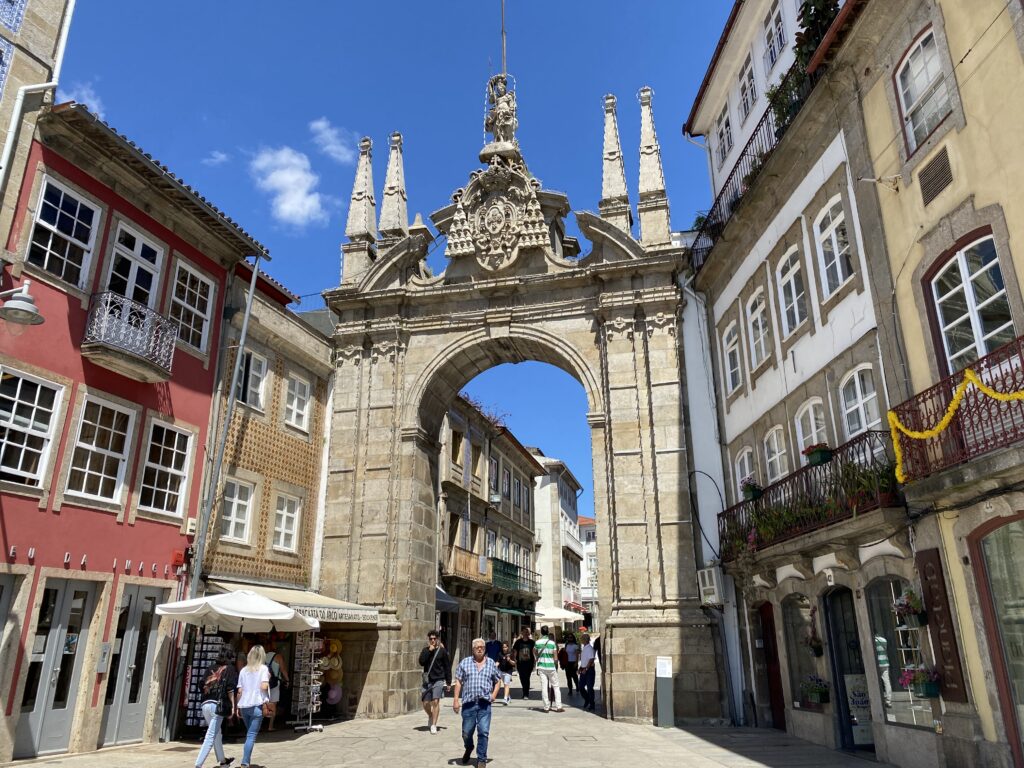




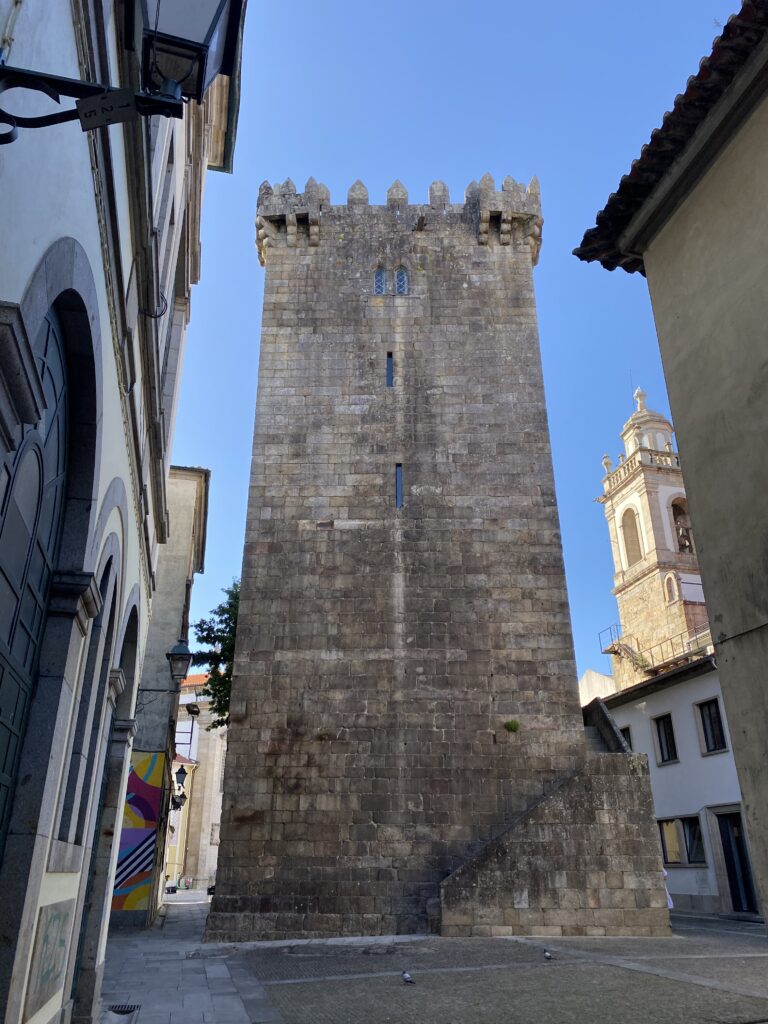

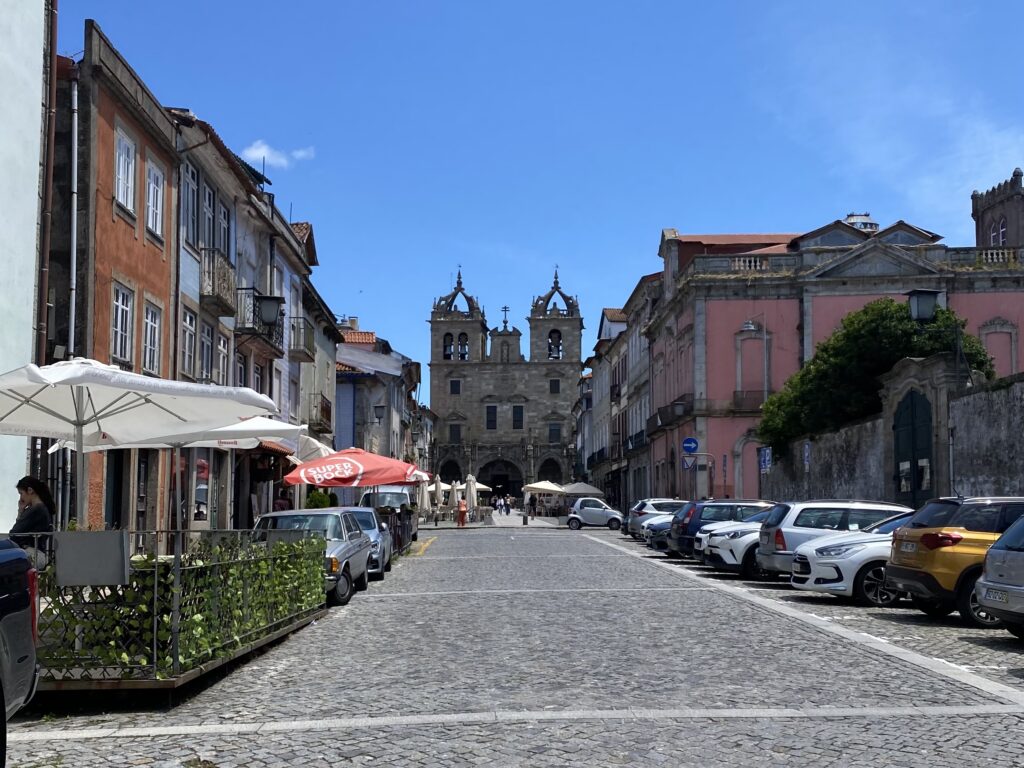

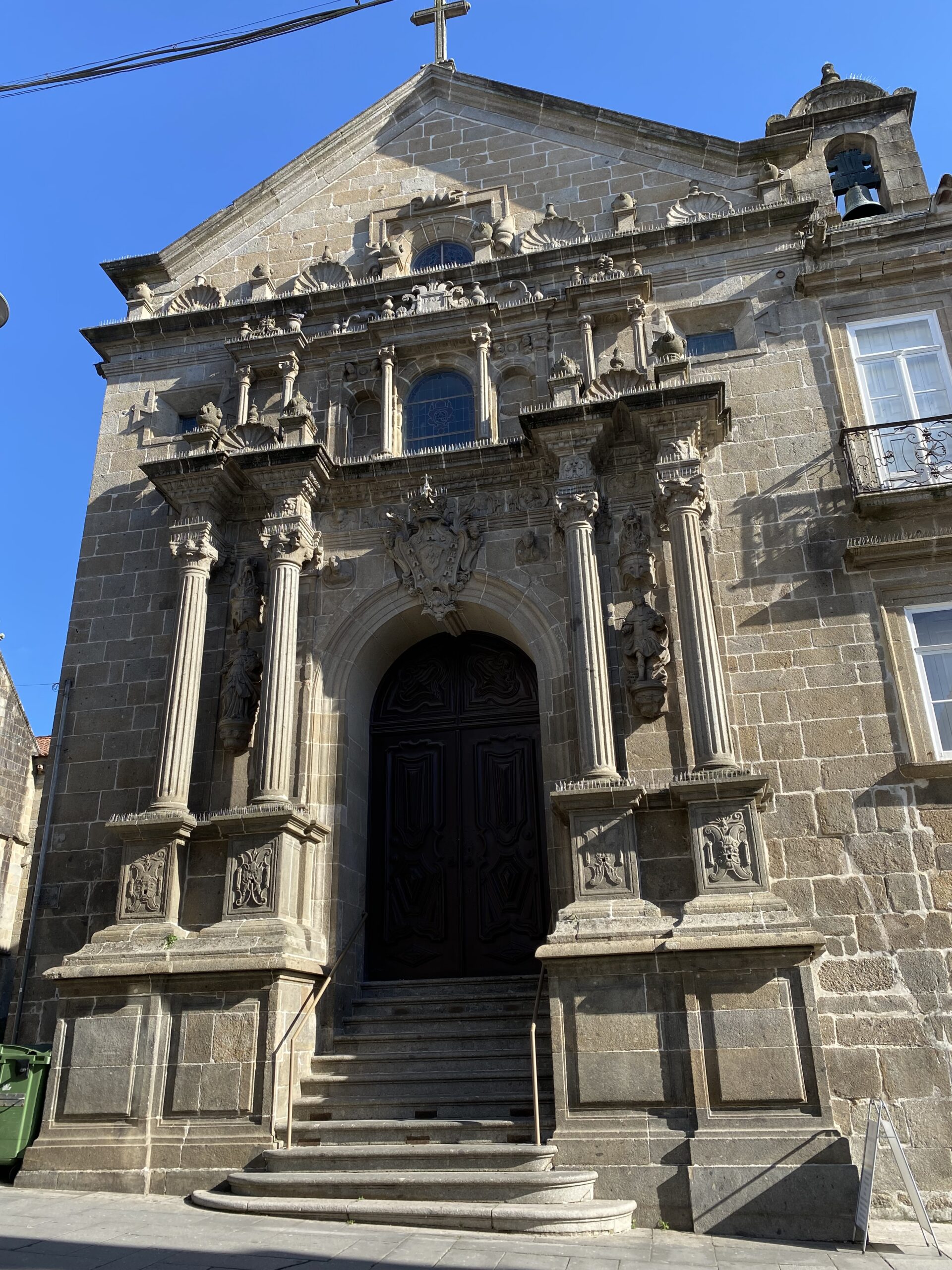
Downtown Braga
Beyond the historic center is the more modern downtown area. It’s a pretty mix of old churches, manicured gardens, and open spaces for events. And of course, there are plenty of food and shopping options.

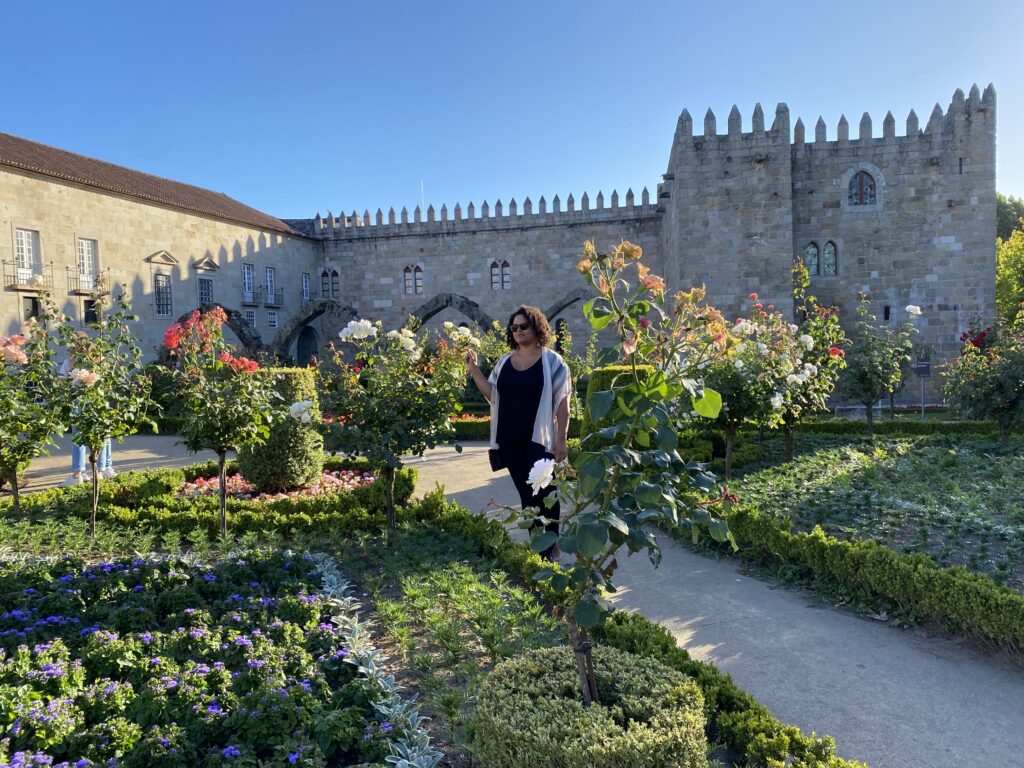
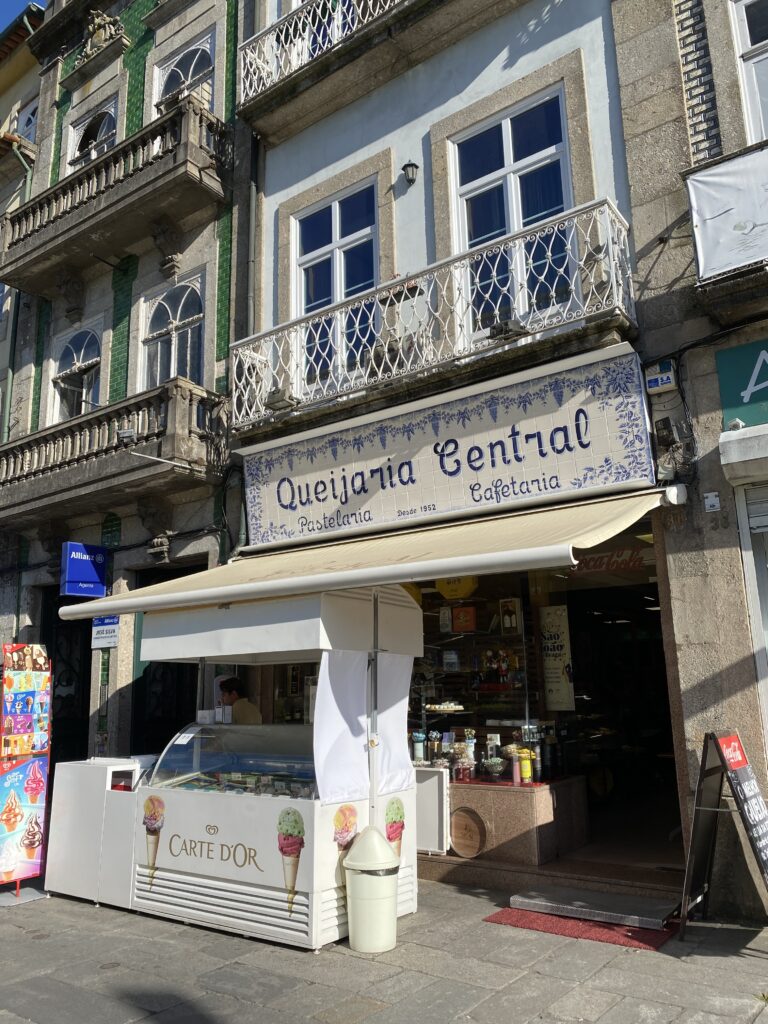
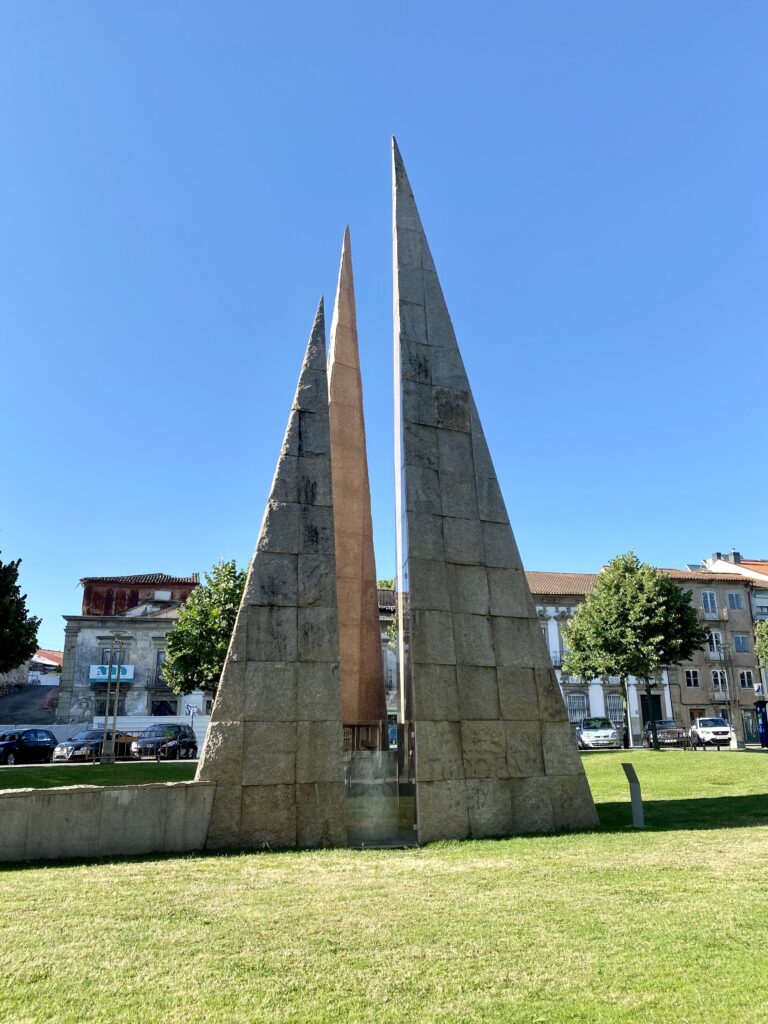
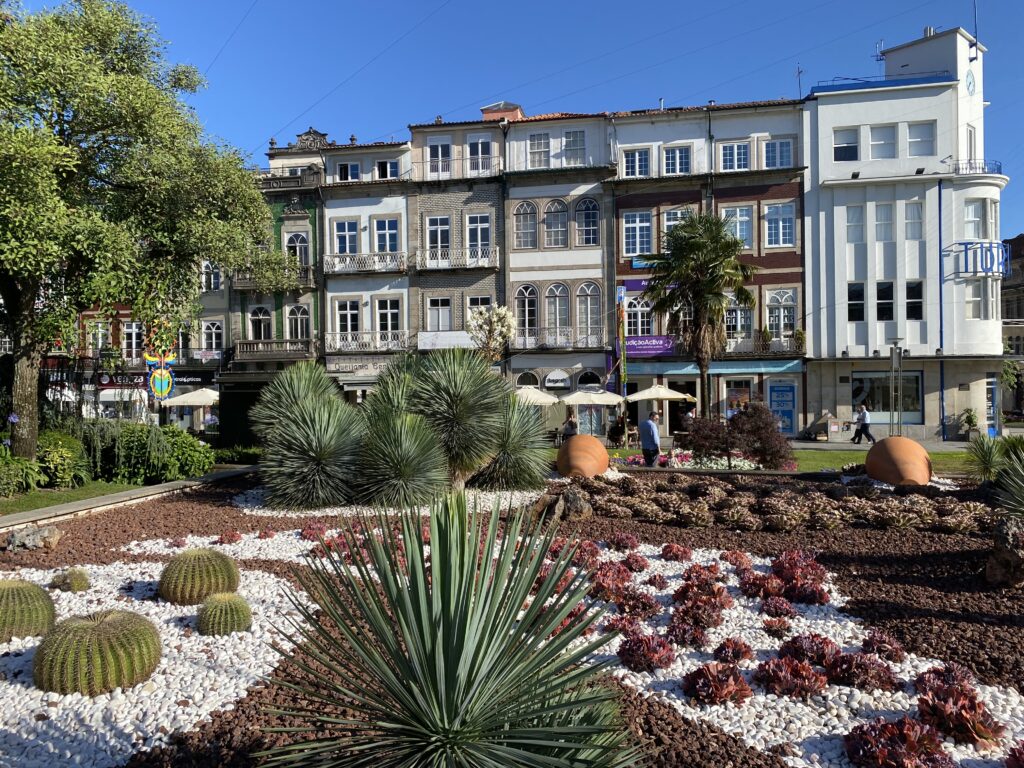
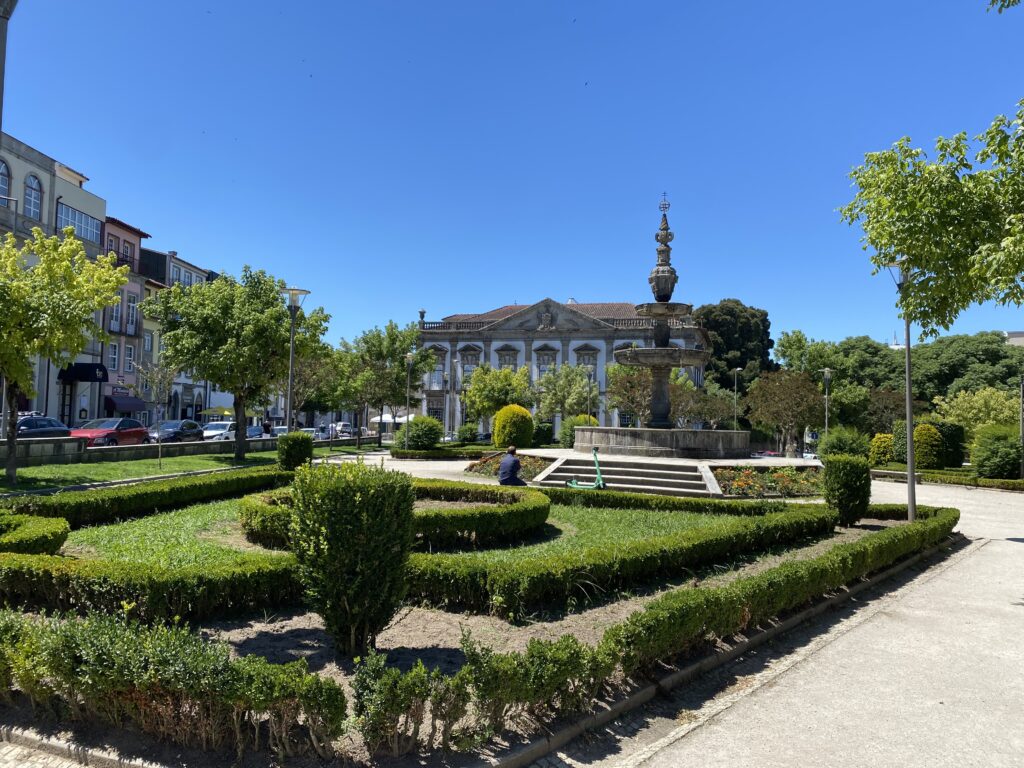
Bom Jesus do Monte
Braga’s most famous attraction is the Bom Jesus do Monte sanctuary. Actually located just outside of Braga, the Catholic shrine and UNESCO World Heritage Site is easily accessible by city bus for just 1,55 euro.
The church isn’t a typical historic Catholic church. It’s located at the top of a mount that you can reach by cable car (1,50 euro one-way) or by foot. Visitors come for the beautiful views of the city below and the view of the sanctuary from the bottom of the Stairway of the Five Senses. The stairway is a symmetrical series of fountains, statues, and walls that lead to a circular platform where you have the famous view up the mount.

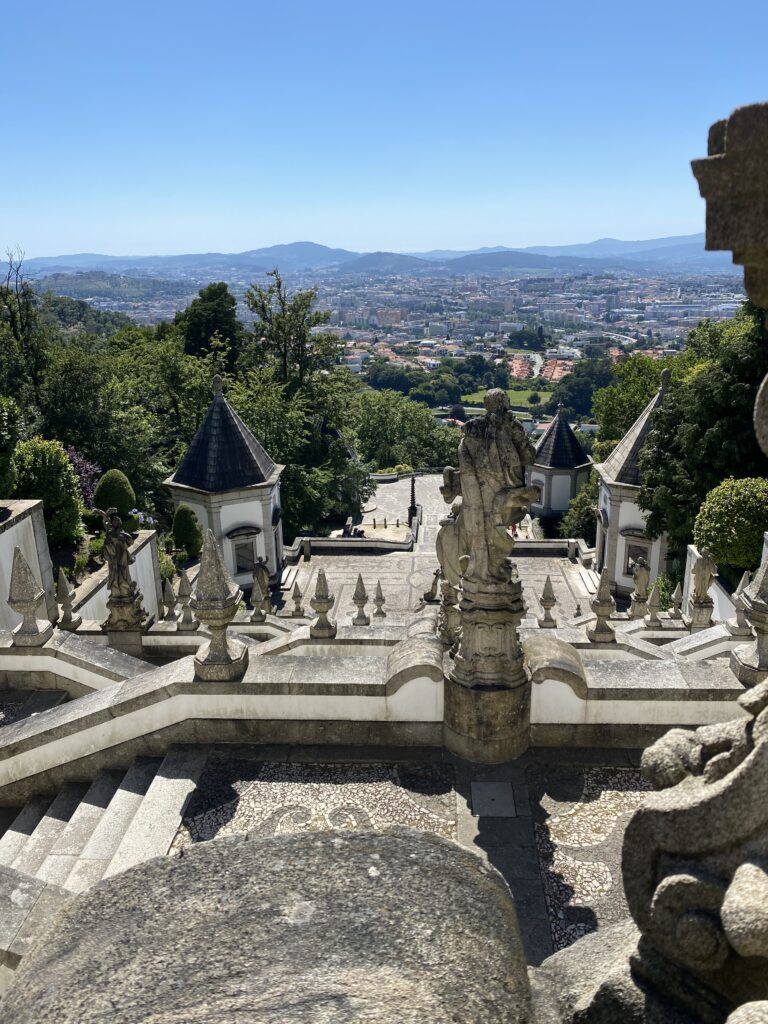

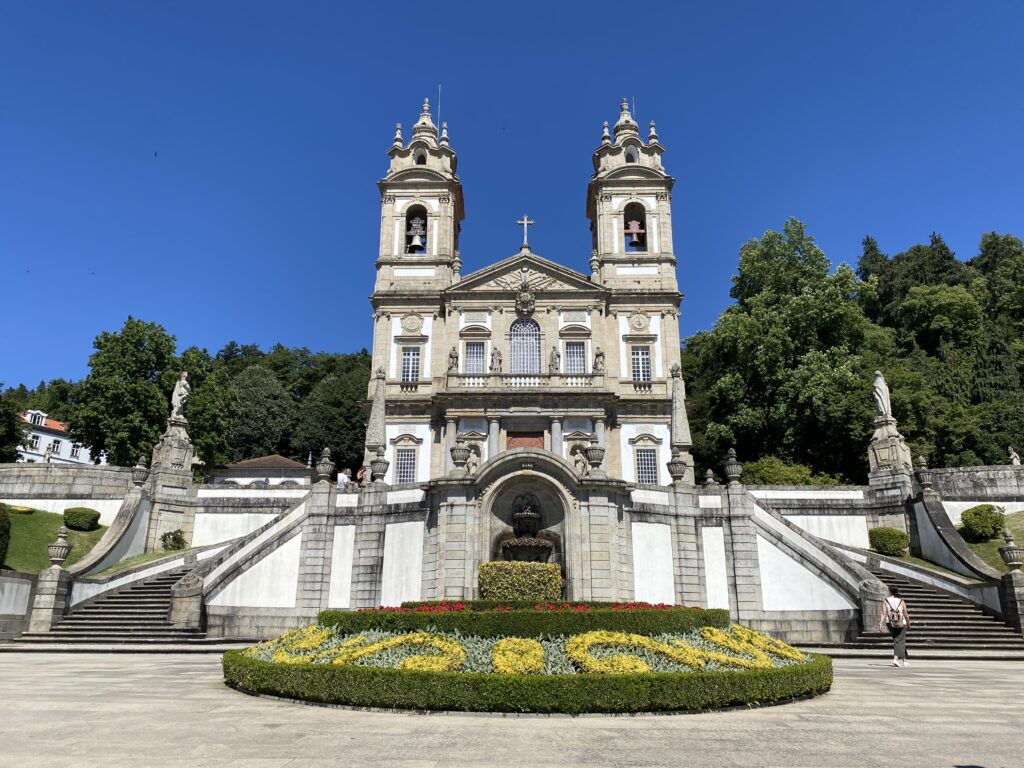

Other than the sanctuary and stairs, the area has a wooded park with walking paths, bridges, and a lake where you can rent canoes. There is also a nice hotel as weddings are held at the church sometimes.
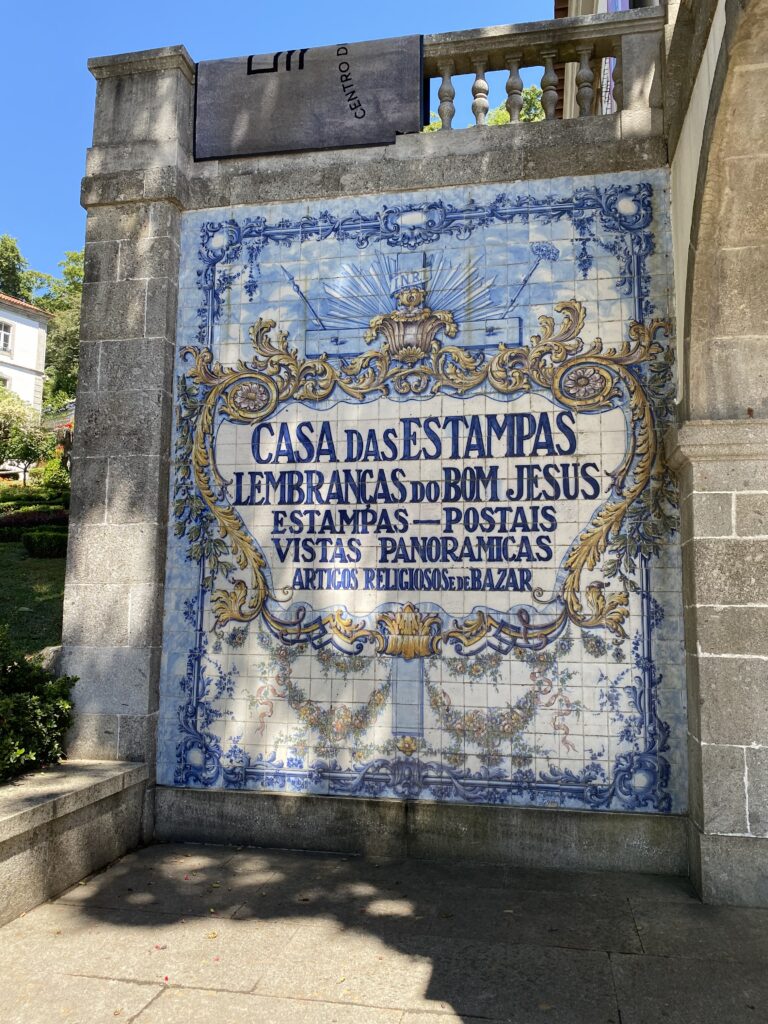


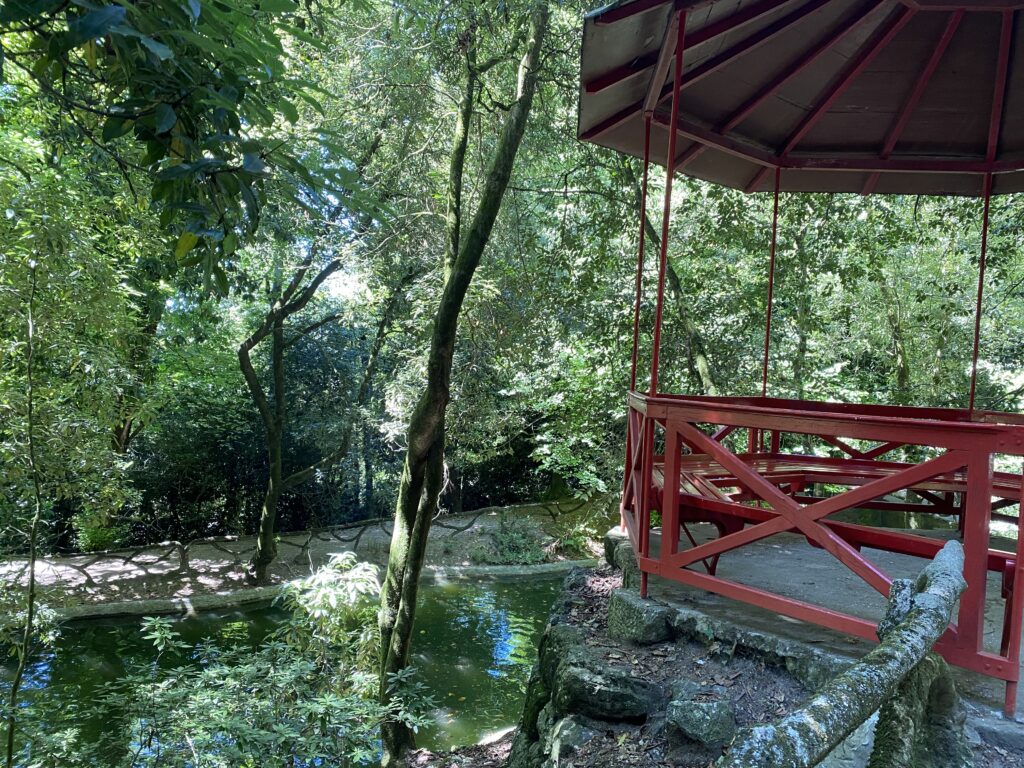

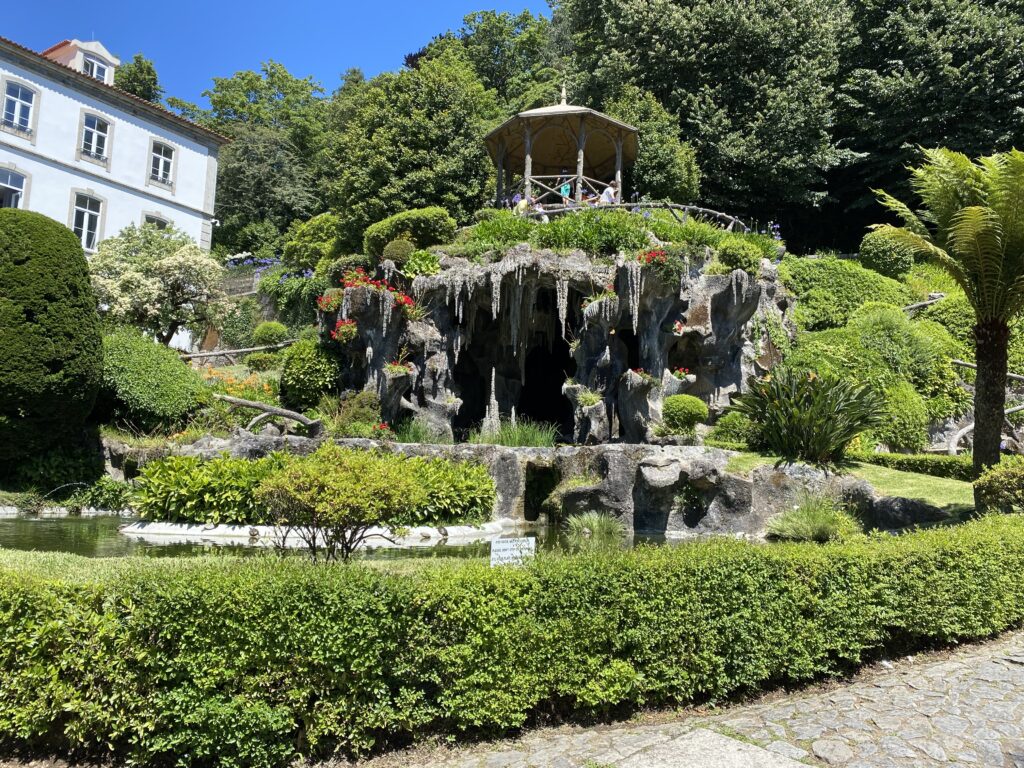
Citânia de Briteiros / Briteiros Citadel
The Citânia de Briteiros is a museum and archeological site with ruins of an Iron Age fortified town. The ruins actually cover a much larger area, but only part of it has been uncovered. When you buy a 3-euro entrance ticket, you get a map that shows multiple walking paths that lead you through the site and include some impressive views.
The site is a bit farther out of the way, about halfway between Braga and Guimarães. I found the easiest way to get there from Braga was by ordering a cab ride on the app Free Now. There wasn’t a convenient public transportation route, and the cab ride wasn’t too expensive.
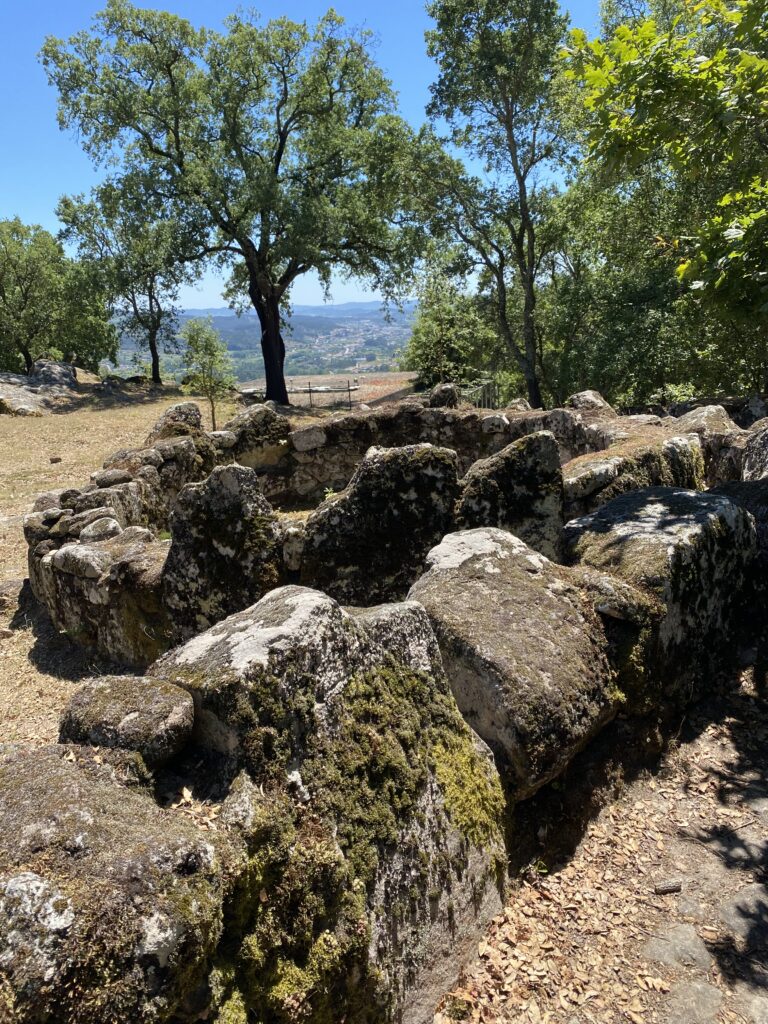
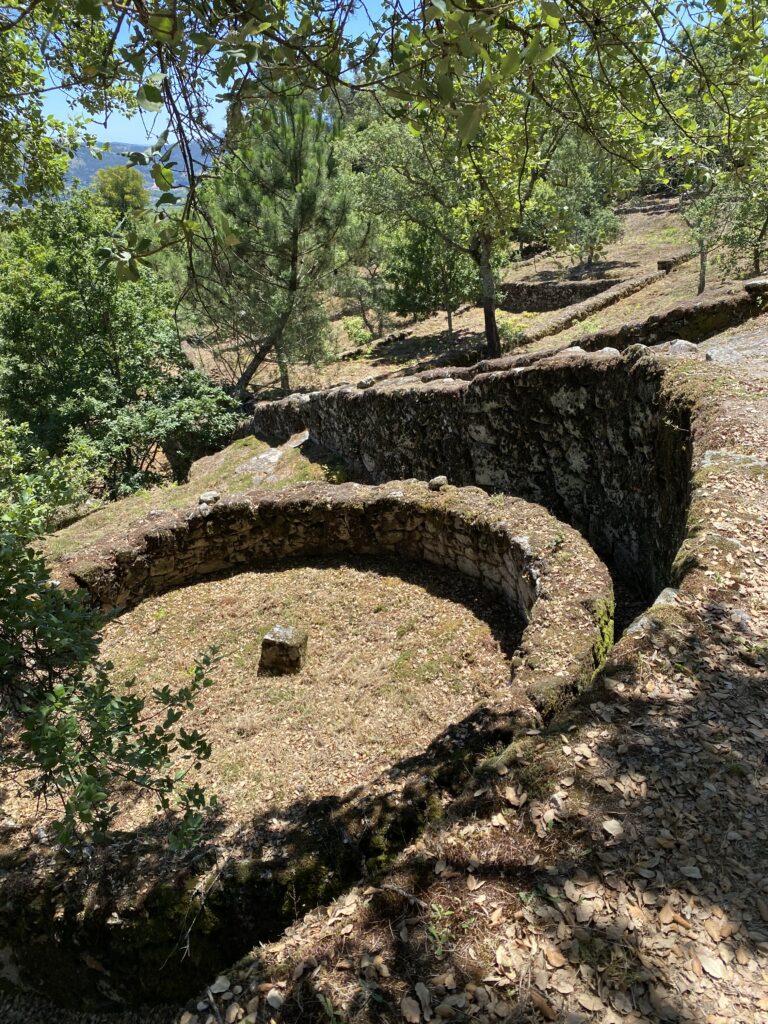
Viana do Castelo
Viana do Castelo is on the coast to the north of Porto. It’s an easy and cheap day trip from Braga or Porto by train and can be easily done in a day because of its compact city center. The train station is centrally located right by the medieval town center and looks out on the ocean.
Praça da República and the Museu do Traje
The old town was my first stop. Praça da República is the large square in the center of town and dates back as far as the 16th century. On the day I visited, people in traditional outfits were selling traditional foods, singing, and playing guitar in the plaza. The event was connected to the Museu do Traje and apparently, they hold many events like this.
For 5 euros entrance, the Museu do Traje, or Costume Museum, exhibits all the different variations of traditional dress in the Viana do Castelo region. It shows clothing, as well as jewelry in the traditional gold filigree style. You can tell the northern culture is strong here, with the museum and also small shops selling minhotos, or painted wooden figurines of men and women in traditional dress of the Minho region.
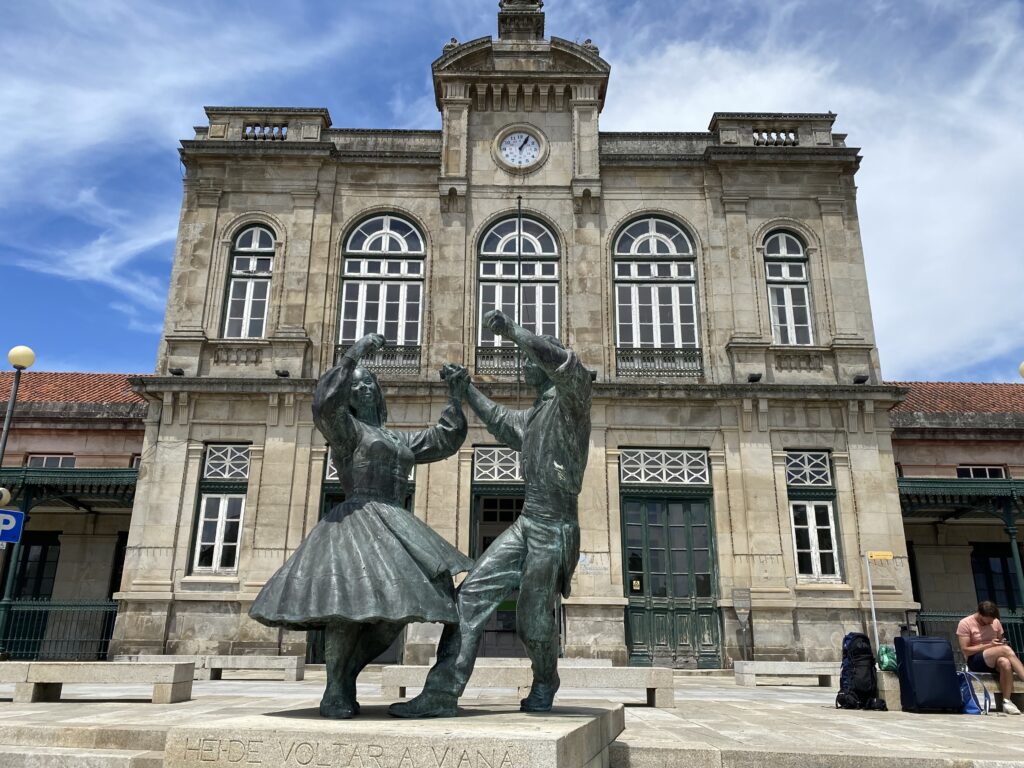
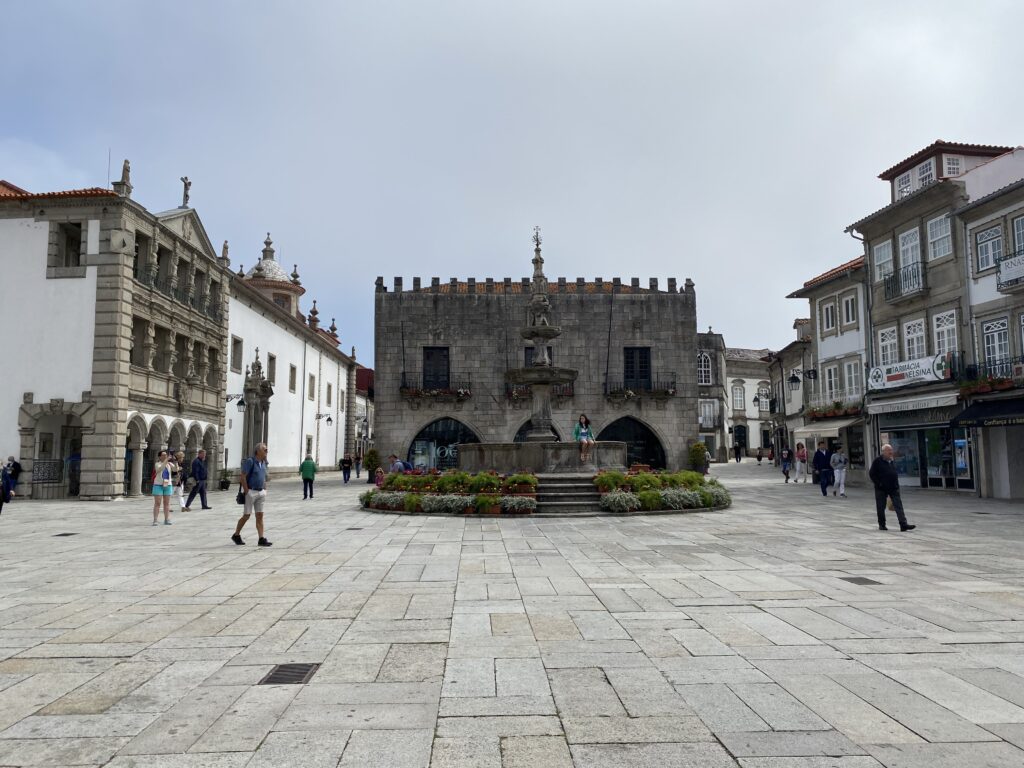
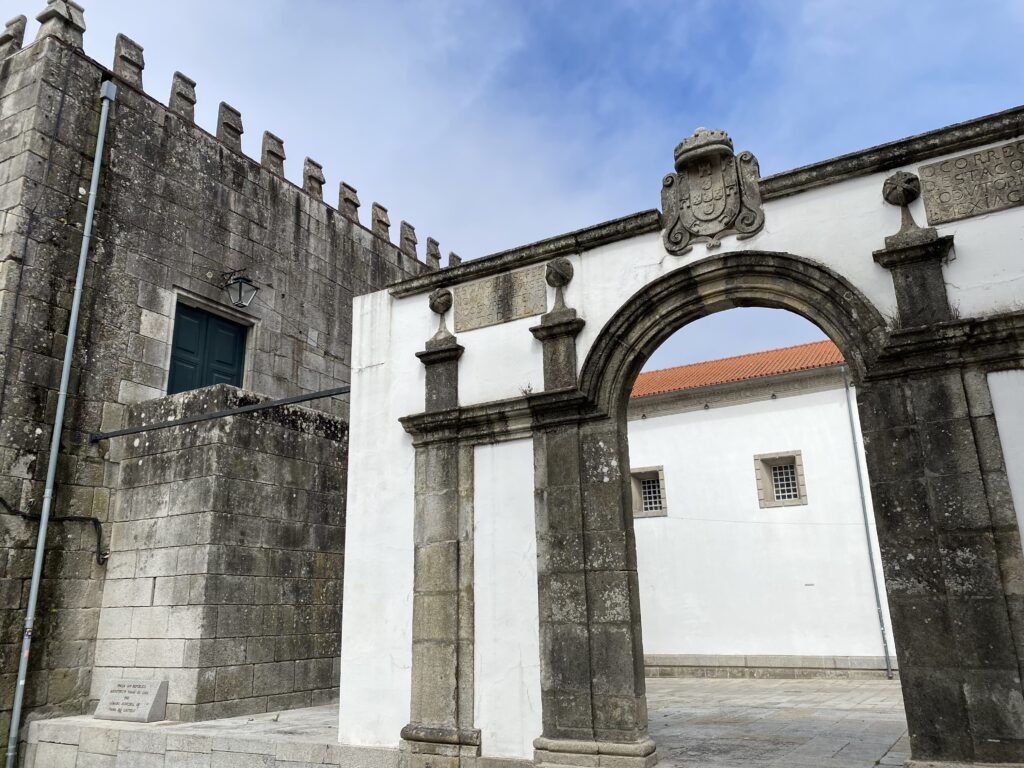
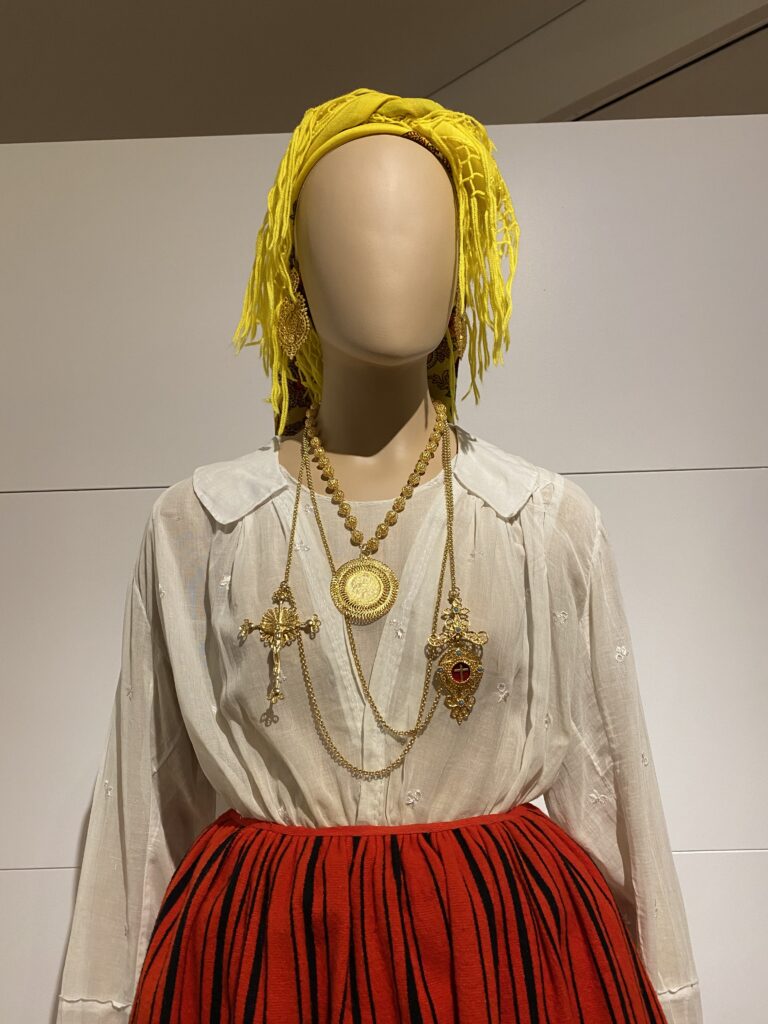

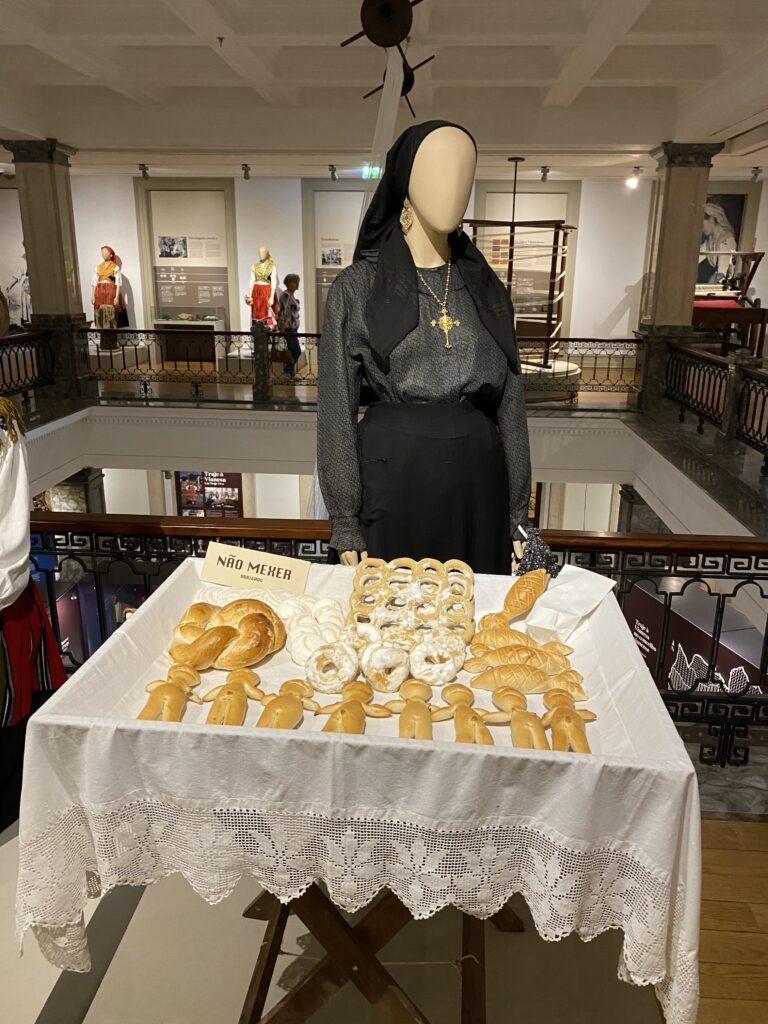
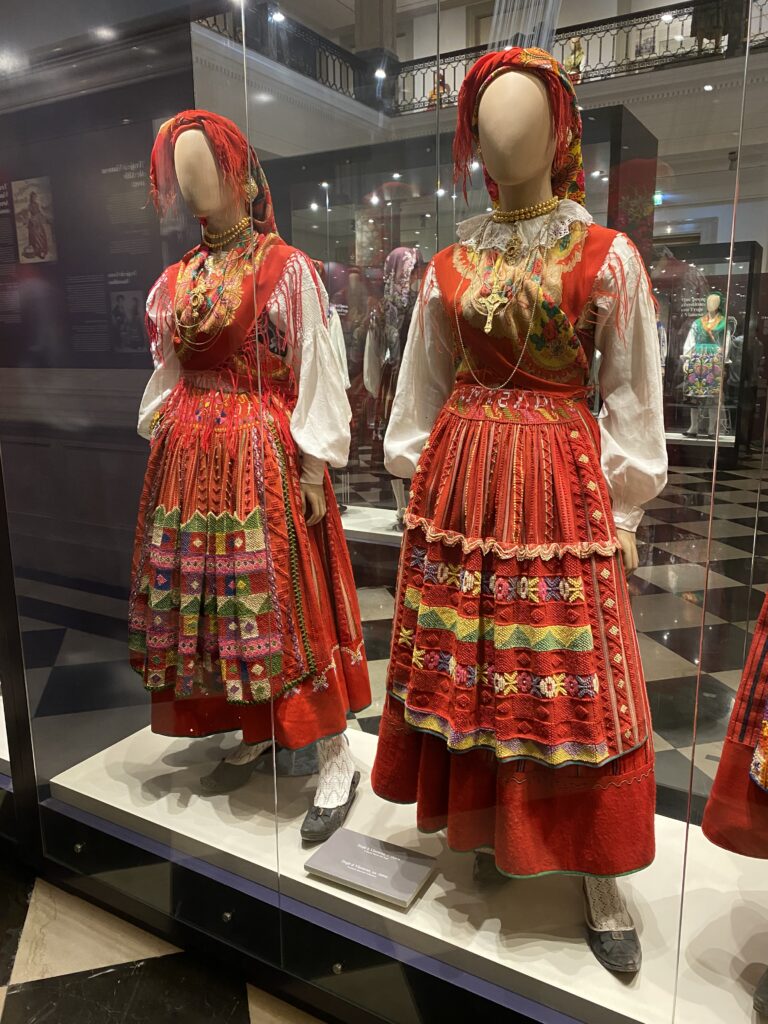


Santuário de Santa Luzia / Santa Luzia Sanctuary
North of the old town and on the opposite side of the train station, is Santa Luzia mountain. A sanctuary sits on top and is relatively recent, built at the turn of the 20th century. From here, you can see the ocean, the River Limia, the old town, and beyond that in three directions. To get there, you take a quick funicular ride for 3 euros round trip.


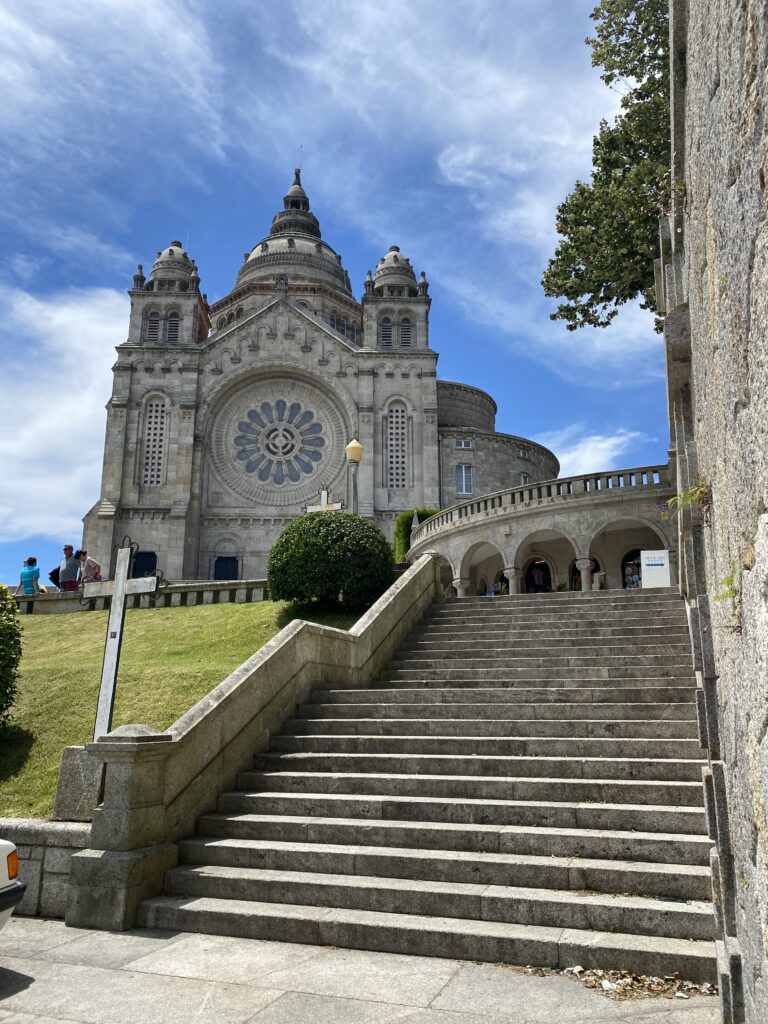
Citania de Santa Luzia / Santa Luzia Citadel
A short walk behind the sanctuary, you’ll reach the Citania de Santa Luzia. This is an Iron Age archeological site, inhabited from the 7th century B.C. up until Roman times. The part of the settlement you can see is only one-third of the entire site, with the rest yet to be uncovered.
A mostly elevated walkway leads you through the ruins of circular homes and settlement walls. This site is very accessible, with no hiking required or rocky paths like you’ll find in the Citania de Briteiros mentioned previously. It’s also quite a bit smaller, but still worth the visit, especially if you’re into history.
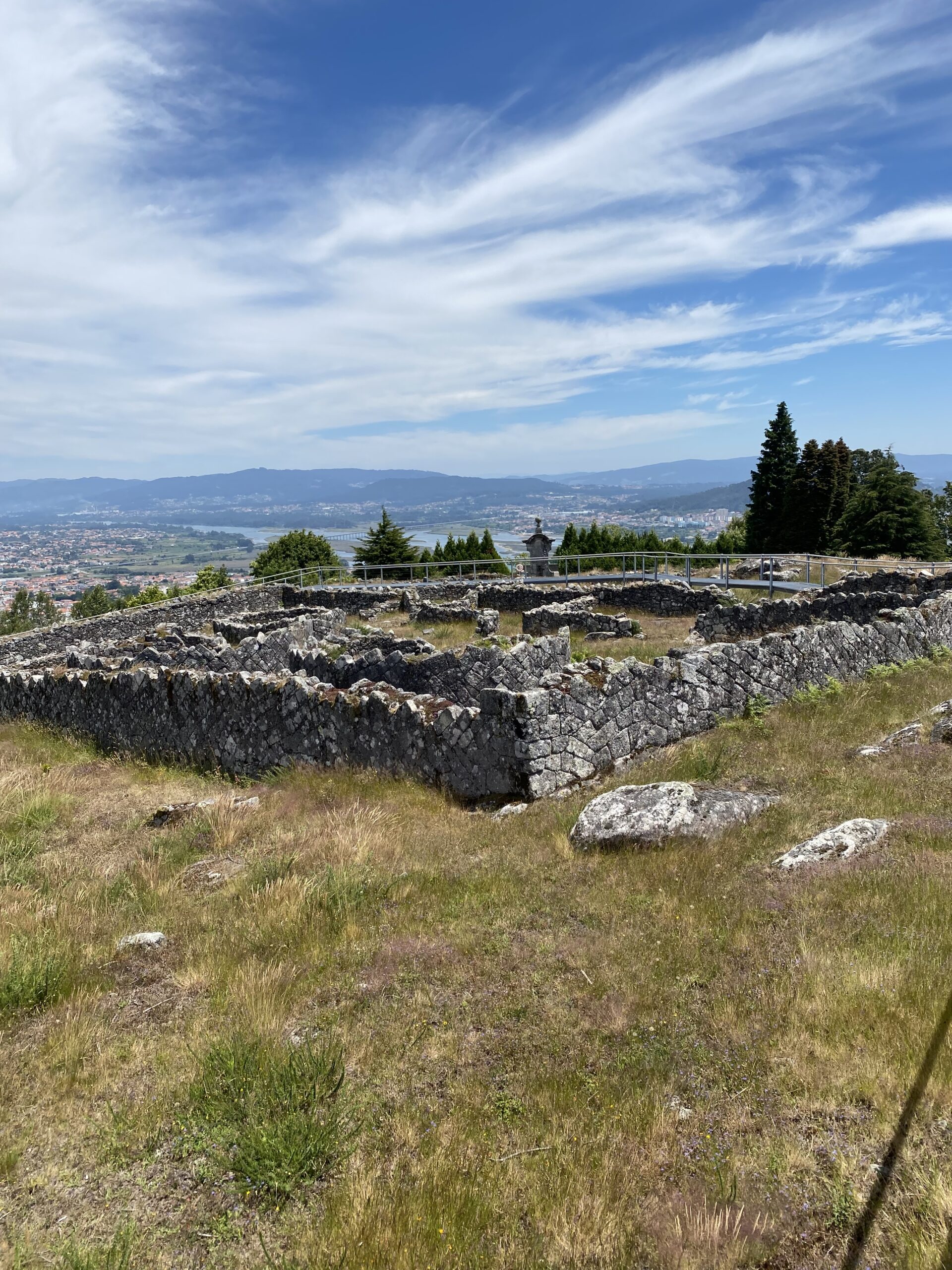

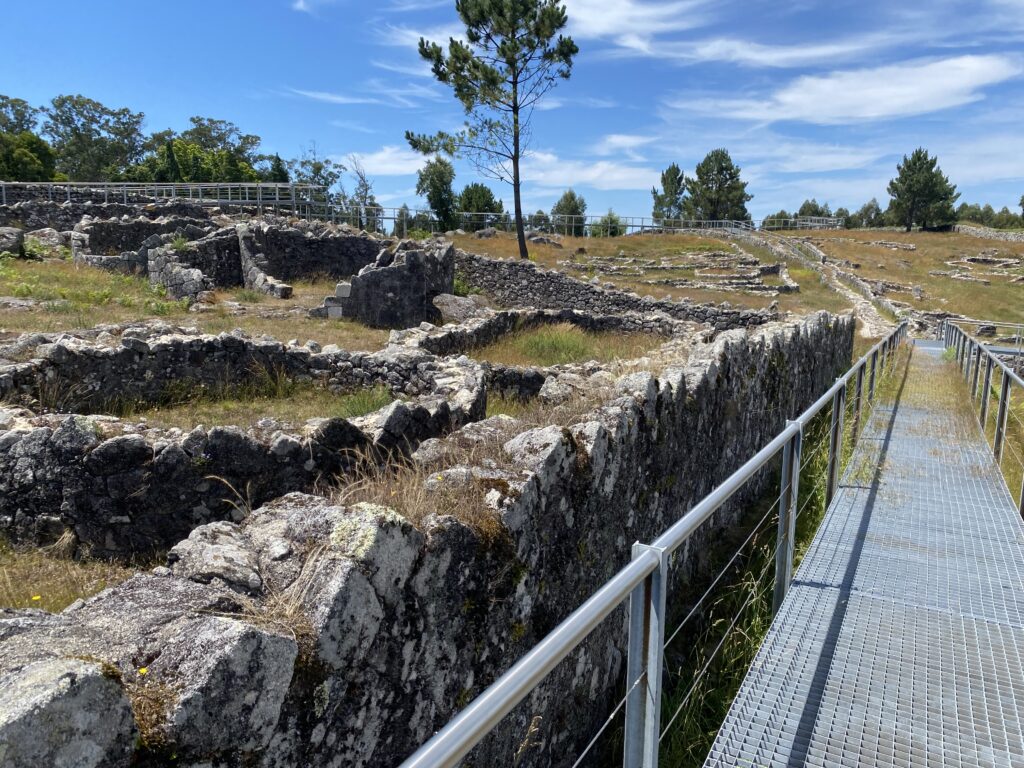


Guimarães
Guimarães is a city in the Braga district of northern Portugal. If you’re staying in Braga like I did, it’s easy to get there by public bus. Its historic town center is an UNESCO World Heritage Site for how well-preserved the medieval settlement is. So of course, the old town is a must-see, but the city also hosts festivals throughout the year and has multiple museums and art galleries.
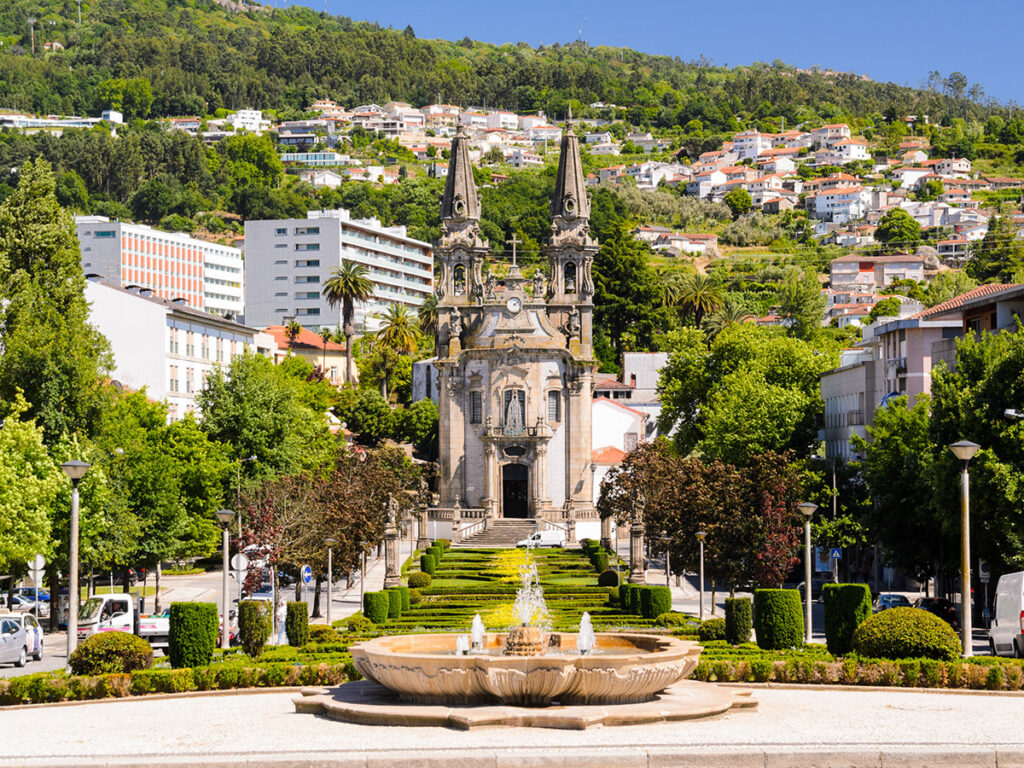
Did I miss anything in this guide to northern Portugal? Let me know in the comments if you’ve visited any of the places mentioned or if northern Portugal is now on your travel list. Make sure to follow me on Instagram for more Portugal content!
If you liked this, check these out:
A Long Layover in Lisbon, Portugal
Essential Alicante, Spain: 8 Things to Do & See
Get Acquainted with Venice, Italy: History, Culture & Tourism
Marbella, Spain: A Gem of the Costa del Sol
Pin it for later:
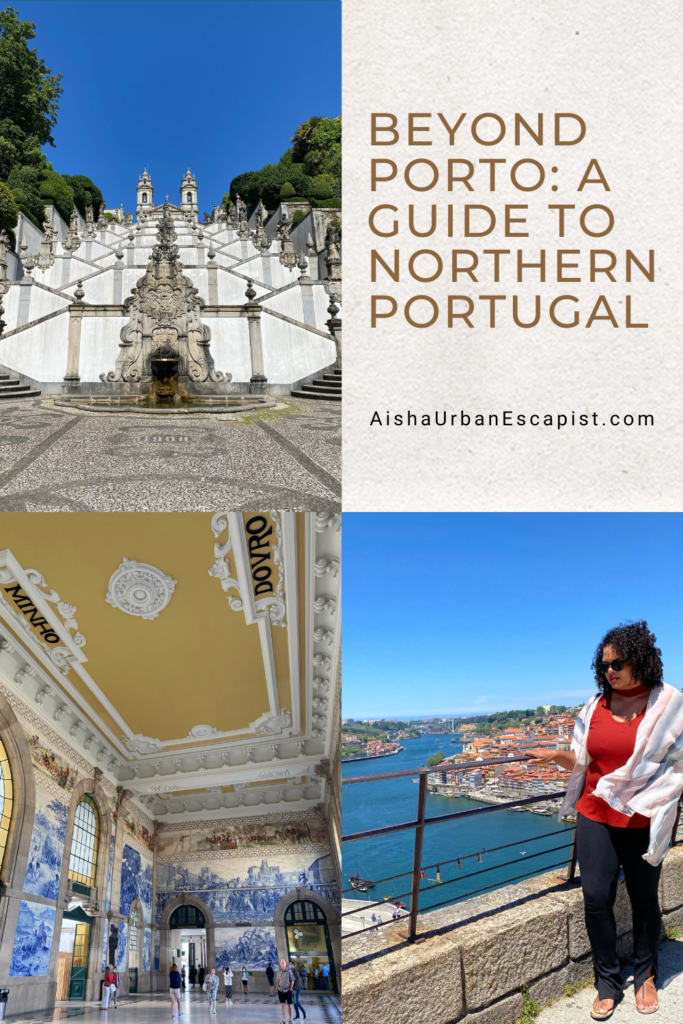
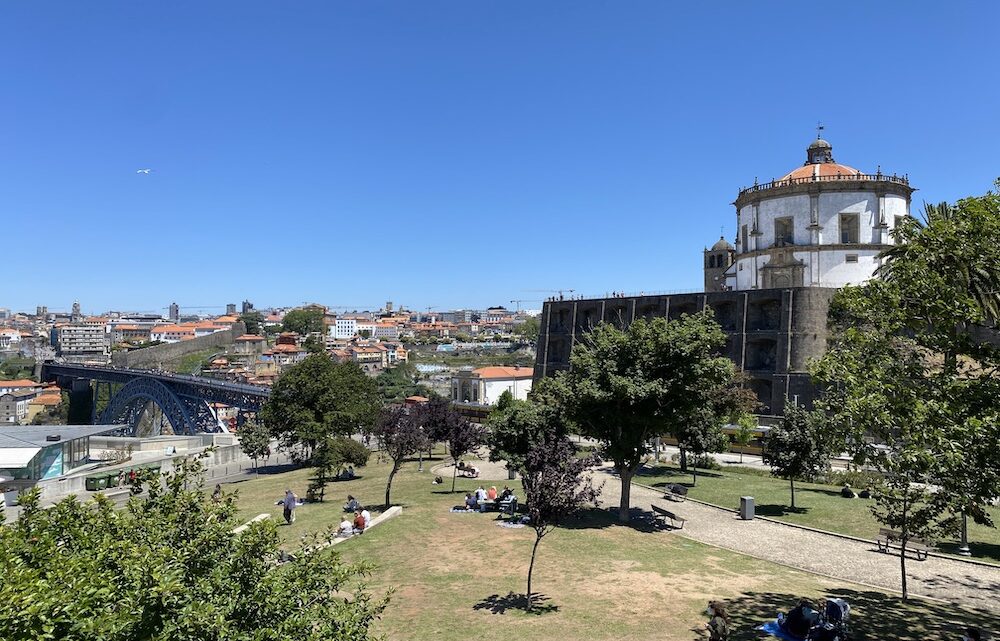

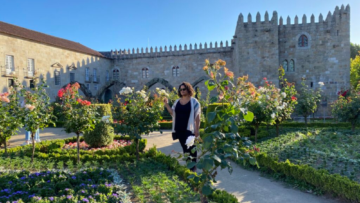
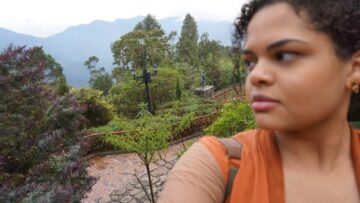

10 Comments
Peculiar article, totally what I was looking for.
Great, I’m glad it helped you.
I love your blog! Thanks so much for sharing! Your pictures are awesome and Portugal looks beautiful!
Thanks so much!
Your photos are fabulous. It is a beautiful place and your blog is wonderful. I hope my husband and I can get there before we are too old!!
Really great work, Aisha.
Thank you, I hope you get to visit too!
This post is so helpful. Gives a great overview, with beautiful photos too. Thanks.
Thanks, I’m glad you enjoyed it!
Thanks so much for the insight into Northern Portugal, Aisha! We’re planning a trip next year and have definitely added a few places to our list after reading this post.
Great, I’m glad it was helpful.